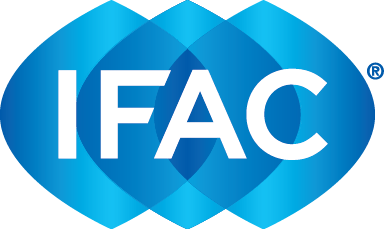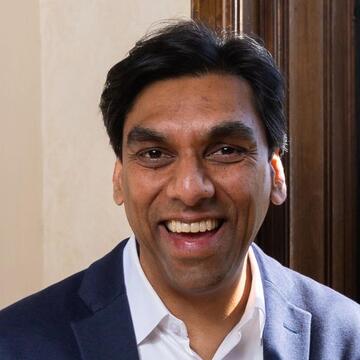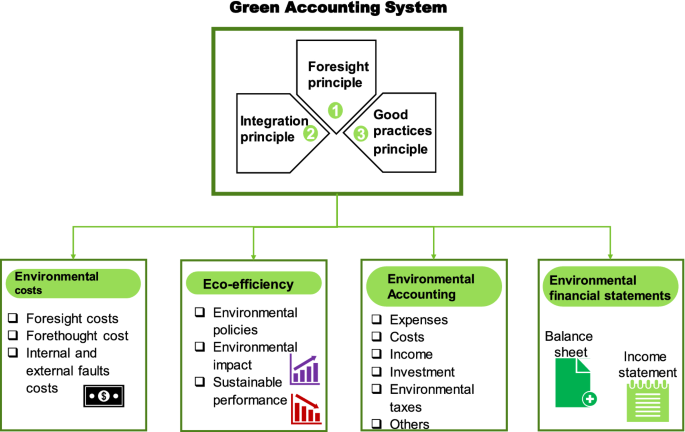

Environmental Accounting Degree
Jump to section.
- Why Environmental Accounting?
- Bachelor's Degrees in Environmental Accounting
- Certificates in Environmental Accounting
- Master's Environmental Accounting Degrees
- Doctoral Level Environmental Accounting Programs
- Job in Environmental Accounting
- Search For Schools
Why an Environmental Accounting Degree?
Environmental accountants calculate the environmental costs of business activity, as well as business costs incurred by environmental regulations and voluntary programs. By tracking a business's effects on the environment, they give managers opportunities to reduce or eliminate costs. Environmental accountants also suggest alternative supply chains, processes, and other options that may reduce business expenses and environmental damage at the same time. Some also account for “environmental assets” such as pollution allowances and revenue-generating waste streams. Environmental accounting is sometimes referred to as “total cost accounting” or “whole cost accounting.”
Environmental Accounting Areas of Specialty
Environmental Management Accounting (EMA) - EMA deals with internal reporting to company management. EMA tracks environmental assets, expenses, and liabilities, to help managers make better decisions about supply chains, capital investments, industrial processes, and more. Financial Accounting (FA) - Financial accounting deals with external reporting to investors, the government, and other stakeholders. Environmental financial accounting reports on environmental liabilities, assets, and programs to these stakeholders. For this reason, it is more formal than EMA. Financial accounting follows Generally Accepted Accounting Principles (GAAP). National Accounting (NA) - NA involves collecting and analyzing information on national income and health. Environmental national accounting reports on countries' environmental health and natural assets, and the activities and conditions that threaten them.
Environmental Accounting Undergraduate Programs
Most accounting jobs require at least a bachelor's degree in accounting. However, environmental accounting is a still-emerging, specialized field; the Association for the Advancement of Sustainability in Higher Education (AASHE) does not list any undergraduate degree programs in environmental accounting. Most students start out with generalized bachelor's degrees in accounting. Afterwards, they can choose to participate in a sustainable business program at the graduate level.
Alternatively, high school students interested in both business and the environment can choose from an increasing number of undergraduate degrees and concentrations in sustainable business, they may not cover accounting in as much depth.
School Spotlight
Texas A&M University offers a Certificate in Energy Accounting for undergraduate students seeking careers in the energy industry. To complete the certificate program, students must complete ACCT 327 (Intermediate Accounting), ACCT 403/603 (Energy Accounting), ACCT/FINC 484 (Internship), BUSN 302 (Energy Industry), and an approved energy-related elective in a non-business discipline, such as environmental science or geology. The certificate program offers opportunities for interdisciplinary study and real-world experience, and sets graduates apart. Aquinas College in Grand Rapids, Michigan offers a B.S. in Sustainable Business that integrates business courses and the natural sciences. Its Environmental Economics and Policy course covers environmental accounting, externalities, contingent valuation, and other environmental accounting concepts. It also offers courses on building social capital, sustainable business innovations, financial management, and industrial ecology.
Environmental Accounting Certification
New accounting and sustainable business graduates may need to earn professional certification. Any accountant filing a report with the U.S. Securities and Exchange Commission must be certified as a Certified Public Accountant (CPA). Many other accountants pursue certification to enhance their credentials, gain more clients, or improve their opportunities for advancement.
CPAs are licensed by their state Board of Accountancy. In most states, certification involves a minimum of a bachelor's degree, passing a national exam, and showing relevant work experience. Most states require CPAs to participate in professional development to keep their licenses.
An environmental accountant can also become a Certified Professional Environmental Auditor (CPEA) through the Board of Environmental, Health and Safety Auditors Certifications. A cer-tification specialty in environmental compliance is available. This certification is recognized by EPA and the Department of Energy. Like CPA certification, CPEA certification requires a bachelor's degree, passing an exam, and demonstrating relevant work experience.
Graduate Certificates in Environmental Accounting
There are currently no graduate certificate programs in environmental accounting. However, college graduates with general accounting degrees can opt to expand their “green” credentials with a graduate certificate in sustainable business.
Master's Degrees in Environmental Accounting
At the current time, environmental accounting mainly refers to a type of accounting or career path, rather than a degree program. Some universities offer Green MBAs, MBAs in Sustainability, and Masters of Environmental Management that include coursework in environmental accounting.
Doctoral Programs in Environmental Accounting
While there are currently no Ph.D. programs in environmental accounting in the United States, aspiring doctoral candidates can choose programs with faculty conducting research in this area. These faculty members can serve as advisors who guide independent student research.
The University of North Texas has one faculty member interested in research on environmental accounting. Applicants must be sure to communicate with potential advisors before selecting a program. RMIT University in Australia offers a Ph.D. of Accountancy. Its program specializes in business research in accounting, auditing, financial accounting, and social and environmental accountability.
Working as an Environmental Accountant
Most EMAs and FAs work for resource-intensive private companies such as mining, manufacturing, and energy firms. Government agencies and industry associations also employ accountants to tally the costs of regulations and pollution prevention measures. Others do national accounting for nonprofit organizations and federal agencies.
Accounting jobs are projected to grow at an average rate of 7% through 2030. Increasing focus on climate change, energy, and other environmental issues are likely to increase employment in environmental accounting.
2020 US Bureau of Labor Statistics salary figures and job growth projections for Accountants and Auditors reflect national data not school-specific information. Conditions in your area may vary. Data accessed September 2021.
- Browse All Articles
- Newsletter Sign-Up
EnvironmentalAccounting →
No results found in working knowledge.
- Were any results found in one of the other content buckets on the left?
- Try removing some search filters.
- Use different search filters.
Overview of the PhD Program
For specific information on the Environmental Science and Engineering PhD program, see the navigation links to the right.
What follows on this page is an overview of all Ph.D. programs at the School; additional information and guidance can be found on the Graduate Policies pages.
General Ph.D. Requirements
- 10 semester-long graduate courses, including at least 8 disciplinary. At least 5 of the 10 should be graduate-level SEAS "technical" courses (or FAS graduate-level technical courses taught by SEAS faculty), not including seminar/reading/project courses. Undergraduate-level courses cannot be used. For details on course requirements, see the school's overall PhD course requirements and the individual program pages linked therein.
- Program Plan (i.e., the set of courses to be used towards the degree) approval by the Committee on Higher Degrees (CHD).
- Minimum full-time academic residency of two years .
- Serve as a Teaching Fellow (TF) in one semester of the second year.
- Oral Qualifying Examination Preparation in the major field is evaluated in an oral examination by a qualifying committee. The examination has the dual purpose of verifying the adequacy of the student's preparation for undertaking research in a chosen field and of assessing the student's ability to synthesize knowledge already acquired. For details on arranging your Qualifying Exam, see the exam policies and the individual program pages linked therein.
- Committee Meetings : PhD students' research committees meet according to the guidelines in each area's "Committee Meetings" listing. For details see the "G3+ Committee Meetings" section of the Policies of the CHD and the individual program pages linked therein.
- Final Oral Examination (Defense) This public examination devoted to the field of the dissertation is conducted by the student's research committee. It includes, but is not restricted to, a defense of the dissertation itself. For details of arranging your final oral exam see the Ph.D. Timeline page.
- Dissertation Upon successful completion of the qualifying examination, a committee chaired by the research supervisor is constituted to oversee the dissertation research. The dissertation must, in the judgment of the research committee, meet the standards of significant and original research.
Optional additions to the Ph.D. program
Harvard PhD students may choose to pursue these additional aspects:
- a Secondary Field (which is similar to a "minor" subject area). SEAS offers PhD Secondary Field programs in Data Science and in Computational Science and Engineering . GSAS lists secondary fields offered by other programs.
- a Master of Science (S.M.) degree conferred en route to the Ph.D in one of several of SEAS's subject areas. For details see here .
- a Teaching Certificate awarded by the Derek Bok Center for Teaching and Learning .
SEAS PhD students may apply to participate in the Health Sciences and Technology graduate program with Harvard Medical School and MIT. Please check with the HST program for details on eligibility (e.g., only students in their G1 year may apply) and the application process.
In Environmental Science & Engineering
- Undergraduate Engineering at Harvard
- Concentration Requirements
- How to Declare
- Who are my Advisors?
- Sophomore Forum
- ABET Information
- Senior Thesis
- Research for Course Credit (ES 91R)
- AB/SM Information
- Peer Concentration Advisors (PCA) Program
- Student Organizations
- How to Apply
- PhD Timeline
- PhD Model Program (Course Guidelines)
- Qualifying Exam
- Committee Meetings
- Committee on Higher Degrees
- Guidelines for Advisor-Student Discussions
- Research Interest Comparison
- Collaborations
- Cross-Harvard Engagement
- Clubs & Organizations
- Centers & Initiatives
- Alumni Stories
About Stanford GSB
- The Leadership
- Dean’s Updates
- School News & History
- Commencement
- Business, Government & Society
- Centers & Institutes
- Center for Entrepreneurial Studies
- Center for Social Innovation
- Stanford Seed
About the Experience
- Learning at Stanford GSB
- Experiential Learning
- Guest Speakers
- Entrepreneurship
- Social Innovation
- Communication
- Life at Stanford GSB
- Collaborative Environment
- Activities & Organizations
- Student Services
- Housing Options
- International Students
Full-Time Degree Programs
- Why Stanford MBA
- Academic Experience
- Financial Aid
- Why Stanford MSx
- Research Fellows Program
- See All Programs
Non-Degree & Certificate Programs
- Executive Education
- Stanford Executive Program
- Programs for Organizations
- The Difference
- Online Programs
- Stanford LEAD
- Seed Transformation Program
- Aspire Program
- Seed Spark Program
- Faculty Profiles
- Academic Areas
- Awards & Honors
- Conferences
Faculty Research
- Publications
- Working Papers
- Case Studies
Research Hub
- Research Labs & Initiatives
- Business Library
- Data, Analytics & Research Computing
- Behavioral Lab
Research Labs
- Cities, Housing & Society Lab
- Golub Capital Social Impact Lab
Research Initiatives
- Corporate Governance Research Initiative
- Corporations and Society Initiative
- Policy and Innovation Initiative
- Rapid Decarbonization Initiative
- Stanford Latino Entrepreneurship Initiative
- Value Chain Innovation Initiative
- Venture Capital Initiative
- Career & Success
- Climate & Sustainability
- Corporate Governance
- Culture & Society
- Finance & Investing
- Government & Politics
- Leadership & Management
- Markets & Trade
- Operations & Logistics
- Opportunity & Access
- Organizational Behavior
- Political Economy
- Social Impact
- Technology & AI
- Opinion & Analysis
- Email Newsletter
Welcome, Alumni
- Communities
- Digital Communities & Tools
- Regional Chapters
- Women’s Programs
- Identity Chapters
- Find Your Reunion
- Career Resources
- Job Search Resources
- Career & Life Transitions
- Programs & Services
- Career Video Library
- Alumni Education
- Research Resources
- Volunteering
- Alumni News
- Class Notes
- Alumni Voices
- Contact Alumni Relations
- Upcoming Events
Admission Events & Information Sessions
- MBA Program
- MSx Program
- PhD Program
- Alumni Events
- All Other Events
- Requirements
- Requirements: Behavioral
- Requirements: Quantitative
- Requirements: Macro
- Requirements: Micro
- Annual Evaluations
- Field Examination
- Research Activities
- Research Papers
- Dissertation
- Oral Examination
- Current Students
- Entering Class Profile
- Education & CV
- GMAT & GRE
- International Applicants
- Statement of Purpose
- Letters of Recommendation
- Reapplicants
- Application Fee Waiver
- Deadline & Decisions
- Job Market Candidates
- Academic Placements
- Stay in Touch
- Fields of Study
- Student Life
Our doctoral program in the accounting field offers broadly based, interdisciplinary training that develops the student’s skills in conducting both analytical and empirical research.
Emphasis is placed on developing a conceptual framework and set of skills for addressing questions broadly related to accounting information. While issues of financial reporting, managerial accounting, corporate governance and taxation are the ultimate concern, special emphasis is given to applying basic knowledge of economics, decision theory, and statistical inference to accounting issues.
Spectrum of Interests and Research Methods
Faculty research represents a broad spectrum of interests and research methods:
- Empirical and analytical research on the relation between accounting information and capital market behavior examines the characteristics of accounting amounts, the effect of accounting disclosures on the capital market, the role of analysts as information intermediaries, and the effects of management discretion. Issues examined also include the impact of financial information on stock and option prices, earnings response coefficients, market microstructure, earnings management, voluntary disclosures, and the effect of changes in accounting standards and disclosure requirements.
- Problems of information asymmetries among management, investors, and others are currently under study. This research investigates, analytically and empirically, the structure of incentive systems and monitoring systems under conditions of information asymmetry. Research on moral hazard, adverse selection, risk sharing, and signaling is incorporated into this work.
- Other ongoing projects include research on the economic effects of auditing and regulation of accounting information, and analysis of tax-induced incentive problems in organizations.
- Additional topics of faculty interest include analytical and empirical research on productivity measurement, accounting for quality, activity-based costing for operations and marketing, and strategic costing and pricing.
Preparation and Qualifications
It is desirable for students to have a solid understanding of applied microeconomic theory, econometrics and mathematics (linear algebra, real analysis, optimization, probability theory) prior to the start of the program. Adequate computer programming skills (e.g. Matlab, SAS, STAT, Python) are necessary in coursework. A traditional accounting background such as CPA is not required.
Faculty in Accounting
Christopher s. armstrong, jung ho choi, george foster, brandon gipper, ron kasznik, john d. kepler, jinhwan kim, rebecca lester, iván marinovic, maureen mcnichols, joseph d. piotroski, kevin smith, emeriti faculty, mary e. barth, william h. beaver, david f. larcker, charles m. c. lee, stefan j. reichelstein, recent publications in accounting, diversity washing, buy now pay (pain) later, elpr: a new measure of capital adequacy for commercial banks, recent insights by stanford business, big investors say they use esg to reduce risk (but mostly focus on the e and g), more time to trade isn’t a good thing for many retail investors, nine stories to get you through tax season.
- Priorities for the GSB's Future
- See the Current DEI Report
- Supporting Data
- Research & Insights
- Share Your Thoughts
- Search Fund Primer
- Teaching & Curriculum
- Affiliated Faculty
- Faculty Advisors
- Louis W. Foster Resource Center
- Defining Social Innovation
- Impact Compass
- Global Health Innovation Insights
- Faculty Affiliates
- Student Awards & Certificates
- Changemakers
- Dean Jonathan Levin
- Dean Garth Saloner
- Dean Robert Joss
- Dean Michael Spence
- Dean Robert Jaedicke
- Dean Rene McPherson
- Dean Arjay Miller
- Dean Ernest Arbuckle
- Dean Jacob Hugh Jackson
- Dean Willard Hotchkiss
- Faculty in Memoriam
- Stanford GSB Firsts
- Certificate & Award Recipients
- Teaching Approach
- Analysis and Measurement of Impact
- The Corporate Entrepreneur: Startup in a Grown-Up Enterprise
- Data-Driven Impact
- Designing Experiments for Impact
- Digital Business Transformation
- The Founder’s Right Hand
- Marketing for Measurable Change
- Product Management
- Public Policy Lab: Financial Challenges Facing US Cities
- Public Policy Lab: Homelessness in California
- Lab Features
- Curricular Integration
- View From The Top
- Formation of New Ventures
- Managing Growing Enterprises
- Startup Garage
- Explore Beyond the Classroom
- Stanford Venture Studio
- Summer Program
- Workshops & Events
- The Five Lenses of Entrepreneurship
- Leadership Labs
- Executive Challenge
- Arbuckle Leadership Fellows Program
- Selection Process
- Training Schedule
- Time Commitment
- Learning Expectations
- Post-Training Opportunities
- Who Should Apply
- Introductory T-Groups
- Leadership for Society Program
- Certificate
- 2023 Awardees
- 2022 Awardees
- 2021 Awardees
- 2020 Awardees
- 2019 Awardees
- 2018 Awardees
- Social Management Immersion Fund
- Stanford Impact Founder Fellowships and Prizes
- Stanford Impact Leader Prizes
- Social Entrepreneurship
- Stanford GSB Impact Fund
- Economic Development
- Energy & Environment
- Stanford GSB Residences
- Environmental Leadership
- Stanford GSB Artwork
- A Closer Look
- California & the Bay Area
- Voices of Stanford GSB
- Business & Beneficial Technology
- Business & Sustainability
- Business & Free Markets
- Business, Government, and Society Forum
- Get Involved
- Second Year
- Global Experiences
- JD/MBA Joint Degree
- MA Education/MBA Joint Degree
- MD/MBA Dual Degree
- MPP/MBA Joint Degree
- MS Computer Science/MBA Joint Degree
- MS Electrical Engineering/MBA Joint Degree
- MS Environment and Resources (E-IPER)/MBA Joint Degree
- Academic Calendar
- Clubs & Activities
- LGBTQ+ Students
- Military Veterans
- Minorities & People of Color
- Partners & Families
- Students with Disabilities
- Student Support
- Residential Life
- Student Voices
- MBA Alumni Voices
- A Week in the Life
- Career Support
- Employment Outcomes
- Cost of Attendance
- Knight-Hennessy Scholars Program
- Yellow Ribbon Program
- BOLD Fellows Fund
- Application Process
- Loan Forgiveness
- Contact the Financial Aid Office
- Evaluation Criteria
- English Language Proficiency
- Personal Information, Activities & Awards
- Professional Experience
- Optional Short Answer Questions
- Application Fee
- Reapplication
- Deferred Enrollment
- Joint & Dual Degrees
- Event Schedule
- Ambassadors
- New & Noteworthy
- Ask a Question
- See Why Stanford MSx
- Is MSx Right for You?
- MSx Stories
- Leadership Development
- Career Advancement
- Career Change
- How You Will Learn
- Admission Events
- Personal Information
- Information for Recommenders
- GMAT, GRE & EA
- English Proficiency Tests
- After You’re Admitted
- Daycare, Schools & Camps
- U.S. Citizens and Permanent Residents
- Faculty Mentors
- Current Fellows
- Standard Track
- Fellowship & Benefits
- Group Enrollment
- Program Formats
- Developing a Program
- Diversity & Inclusion
- Strategic Transformation
- Program Experience
- Contact Client Services
- Campus Experience
- Live Online Experience
- Silicon Valley & Bay Area
- Digital Credentials
- Faculty Spotlights
- Participant Spotlights
- Eligibility
- International Participants
- Stanford Ignite
- Frequently Asked Questions
- Operations, Information & Technology
- Classical Liberalism
- The Eddie Lunch
- Accounting Summer Camp
- Videos, Code & Data
- California Econometrics Conference
- California Quantitative Marketing PhD Conference
- California School Conference
- China India Insights Conference
- Homo economicus, Evolving
- Political Economics (2023–24)
- Scaling Geologic Storage of CO2 (2023–24)
- A Resilient Pacific: Building Connections, Envisioning Solutions
- Adaptation and Innovation
- Changing Climate
- Civil Society
- Climate Impact Summit
- Climate Science
- Corporate Carbon Disclosures
- Earth’s Seafloor
- Environmental Justice
- Operations and Information Technology
- Organizations
- Sustainability Reporting and Control
- Taking the Pulse of the Planet
- Urban Infrastructure
- Watershed Restoration
- Junior Faculty Workshop on Financial Regulation and Banking
- Ken Singleton Celebration
- Marketing Camp
- Quantitative Marketing PhD Alumni Conference
- Presentations
- Theory and Inference in Accounting Research
- Stanford Closer Look Series
- Quick Guides
- Core Concepts
- Journal Articles
- Glossary of Terms
- Faculty & Staff
- Researchers & Students
- Research Approach
- Charitable Giving
- Financial Health
- Government Services
- Workers & Careers
- Short Course
- Adaptive & Iterative Experimentation
- Incentive Design
- Social Sciences & Behavioral Nudges
- Bandit Experiment Application
- Conferences & Events
- Reading Materials
- Energy Entrepreneurship
- Faculty & Affiliates
- SOLE Report
- Responsible Supply Chains
- Current Study Usage
- Pre-Registration Information
- Participate in a Study
- Founding Donors
- Location Information
- Participant Profile
- Network Membership
- Program Impact
- Collaborators
- Entrepreneur Profiles
- Company Spotlights
- Seed Transformation Network
- Responsibilities
- Current Coaches
- How to Apply
- Meet the Consultants
- Meet the Interns
- Intern Profiles
- Collaborate
- Research Library
- News & Insights
- Program Contacts
- Databases & Datasets
- Research Guides
- Consultations
- Research Workshops
- Career Research
- Research Data Services
- Course Reserves
- Course Research Guides
- Material Loan Periods
- Fines & Other Charges
- Document Delivery
- Interlibrary Loan
- Equipment Checkout
- Print & Scan
- MBA & MSx Students
- PhD Students
- Other Stanford Students
- Faculty Assistants
- Research Assistants
- Stanford GSB Alumni
- Telling Our Story
- Staff Directory
- Site Registration
- Alumni Directory
- Alumni Email
- Privacy Settings & My Profile
- Success Stories
- The Story of Circles
- Support Women’s Circles
- Stanford Women on Boards Initiative
- Alumnae Spotlights
- Insights & Research
- Industry & Professional
- Entrepreneurial Commitment Group
- Recent Alumni
- Half-Century Club
- Fall Reunions
- Spring Reunions
- MBA 25th Reunion
- Half-Century Club Reunion
- Faculty Lectures
- Ernest C. Arbuckle Award
- Alison Elliott Exceptional Achievement Award
- ENCORE Award
- Excellence in Leadership Award
- John W. Gardner Volunteer Leadership Award
- Robert K. Jaedicke Faculty Award
- Jack McDonald Military Service Appreciation Award
- Jerry I. Porras Latino Leadership Award
- Tapestry Award
- Student & Alumni Events
- Executive Recruiters
- Interviewing
- Land the Perfect Job with LinkedIn
- Negotiating
- Elevator Pitch
- Email Best Practices
- Resumes & Cover Letters
- Self-Assessment
- Whitney Birdwell Ball
- Margaret Brooks
- Bryn Panee Burkhart
- Margaret Chan
- Ricki Frankel
- Peter Gandolfo
- Cindy W. Greig
- Natalie Guillen
- Carly Janson
- Sloan Klein
- Sherri Appel Lassila
- Stuart Meyer
- Tanisha Parrish
- Virginia Roberson
- Philippe Taieb
- Michael Takagawa
- Terra Winston
- Johanna Wise
- Debbie Wolter
- Rebecca Zucker
- Complimentary Coaching
- Changing Careers
- Work-Life Integration
- Career Breaks
- Flexible Work
- Encore Careers
- Join a Board
- D&B Hoovers
- Data Axle (ReferenceUSA)
- EBSCO Business Source
- Global Newsstream
- Market Share Reporter
- ProQuest One Business
- Student Clubs
- Entrepreneurial Students
- Stanford GSB Trust
- Alumni Community
- How to Volunteer
- Springboard Sessions
- Consulting Projects
- 2020 – 2029
- 2010 – 2019
- 2000 – 2009
- 1990 – 1999
- 1980 – 1989
- 1970 – 1979
- 1960 – 1969
- 1950 – 1959
- 1940 – 1949
- Service Areas
- ACT History
- ACT Awards Celebration
- ACT Governance Structure
- Building Leadership for ACT
- Individual Leadership Positions
- Leadership Role Overview
- Purpose of the ACT Management Board
- Contact ACT
- Business & Nonprofit Communities
- Reunion Volunteers
- Ways to Give
- Fiscal Year Report
- Business School Fund Leadership Council
- Planned Giving Options
- Planned Giving Benefits
- Planned Gifts and Reunions
- Legacy Partners
- Giving News & Stories
- Giving Deadlines
- Development Staff
- Submit Class Notes
- Class Secretaries
- Board of Directors
- Health Care
- Sustainability
- Class Takeaways
- All Else Equal: Making Better Decisions
- If/Then: Business, Leadership, Society
- Grit & Growth
- Think Fast, Talk Smart
- Spring 2022
- Spring 2021
- Autumn 2020
- Summer 2020
- Winter 2020
- In the Media
- For Journalists
- DCI Fellows
- Other Auditors
- Academic Calendar & Deadlines
- Course Materials
- Entrepreneurial Resources
- Campus Drive Grove
- Campus Drive Lawn
- CEMEX Auditorium
- King Community Court
- Seawell Family Boardroom
- Stanford GSB Bowl
- Stanford Investors Common
- Town Square
- Vidalakis Courtyard
- Vidalakis Dining Hall
- Catering Services
- Policies & Guidelines
- Reservations
- Contact Faculty Recruiting
- Lecturer Positions
- Postdoctoral Positions
- Accommodations
- CMC-Managed Interviews
- Recruiter-Managed Interviews
- Virtual Interviews
- Campus & Virtual
- Search for Candidates
- Think Globally
- Recruiting Calendar
- Recruiting Policies
- Full-Time Employment
- Summer Employment
- Entrepreneurial Summer Program
- Global Management Immersion Experience
- Social-Purpose Summer Internships
- Process Overview
- Project Types
- Client Eligibility Criteria
- Client Screening
- ACT Leadership
- Social Innovation & Nonprofit Management Resources
- Develop Your Organization’s Talent
- Centers & Initiatives
- Student Fellowships

Putting the Focus on Environmental Management Accounting
1. what is environmental management accounting (ema).
EMA supports managers to make better decisions by informing them about environmental impacts of an organization beyond its boundaries and about environmental issues that influence the organization. This includes economic drivers and consequences of environmental issues. EMA can help identifying environmental problems caused, environmental improvements made and how they relate to the economic performance of the organization.
Apart from identifying problems and solutions to environmental problems, EMA helps identifying ‘win-win’ situations that improve both economic and environmental performance. In order to do this. EMA provides relevant monetary and physical information to managers to support decisions specific to their role in the organization. The information provided by EMA connects: short-run operational and long-run strategic concerns; repetitive routine and ad hoc decision settings; past and future performance; and the decision-making, planning and control, coordination, motivation and communication responsibilities of different types of managers.
2. How has EMA practice developed over the last 15 years?
From the late 1980’s early approaches to EMA were proposed and, by 2005, there was sufficient agreement amongst stakeholders for IFAC (2005) to offer guidance to members and to develop a common understanding of what EMA should cover. IFAC aimed to engage with professional bodies who were producing separate advice for the practitioners its members represented. To reduce some of the international confusion about EMA, IFAC provided a general framework and set of definitions. IFAC’s (2005) guidance to members referred to its Management Accounting Concepts definition:
“The management of environmental and economic performance via management accounting systems and practices that focus on both physical information on the flow of energy, water, materials, and wastes, as well as monetary information on related costs, earnings and savings.” (IFAC 2005, p. 16).
Since this guidance on EMA was issued over 15 years ago various developments have occurred in the profession. In this period there has been a significant increase in concern over the risks posed by environmental crisis, especially in relation to the existential threat from climate change, as included in the United Nations Sustainable Development Goals, and movement of the world beyond the safe-space of environmental planetary boundaries. For practitioners this has meant growing demand for their environmental accounting services, not only in relation to internal management advice, but also external reporting standards about the stewardship of environmental resources.
To meet these pressures, EMA research and practice has developed to provide granular accounting advice in relation to risk management of, amongst others, carbon emissions management and disclosure, water management and reporting, material flow and waste management within the context of a circular economy, and accounting for transformation of entities and governments towards zero impacts (or better) on the environment.
Practitioners and students of accounting now have access to a growing body of professional development courses and basic education about environmental issues and the tools that environmental management accounting offers.
3. How should EMA practice develop in the future?
As awareness of environmental crisis grows through international conventions, regional and national agreements, EMA practice should be mainstreamed in several roles.
First, it should build its attention-directing function to make environmental risks apparent to clients of accountancy firms and managers of organizations where accountants are employed.
Second, EMA should be integrated in the planning and control processes of organizations as a key set of tools, such as operational and capital environmental budgeting, environmental investment appraisal and environmental benchmarking based on science-based targets.
Third, EMA practice should be strongly linked with identifying opportunities that emerge from the continuously changing global and local stakeholder pressures to reduce environmental risks in line with international conventions, regional and national agreements. EMA practice should, in these ways, be viewed as support for both problem-solving and opportunity-seeking where organizations aim to transform their activities in operations, supply chains, and the product-service portfolio.
With these roles to the fore, EMA practice should be supported through: appropriate funding demonstrated to provide attractive ROCE; knowledgeable teams of specialised staff; and organizational responsibility structures in place to advise about accounting systems that identify, measure and communicate environmental risks and opportunities. To institutionalise these roles, EMA practice should also be embedded in the educational processes of students and practitioners through university degrees, professional accreditation courses, and ongoing professional development. Focus should be on the strength of EMA to demonstrate how it helps change behaviour to transform organizational activities and contribute to environmental solutions.
4. Where is EMA research today, and what are the future research opportunities in this area?
EMA research has developed substantially in recent years. Initial projects focussed on establishing and demonstrating the ways in which EMA could result in win-win outcomes and there are numerous case studies from multiple countries and industries that speak to this point. Nevertheless, despite this early success, the focus of EMA was largely inside the company while the external impacts with regard to planetary boundaries and society still need to be developed.
Further challenges exist in specific areas, especially with regard to access to and creation of certain types of environmental data (e.g. biodiversity) and the best way to link such data with monetary metrics. When set against the backdrop of increasing interest in new forms of advanced technology related to machine learning, big data, artificial intelligence and Industry 4.0 (the fourth industrial revolution), complementary opportunities exist to develop tools that increase the accuracy of EMA and improve decision making (Burritt and Christ, 2016). Advanced technology could also support EMA research to be undertaken along the supply chain improving environmental traceability to show the full environmental and economic benefits and costs associated with products and activities. Research is also needed into EMA and the changing perspective on globalization brought about by disasters such as the global pandemic.
There has also been movement towards expanding EMA towards a more complete form of sustainability management accounting, which encapsulates social and environmental as well as economic issues (Maas et al., 2016). Although under-researched a move towards sustainability management accounting could be a way to assist business in relation to various initiatives like the UN SDGs. Further research is needed into accounting support for managers to combine economically viable environmental and social opportunities.
5. What is the role of the accountancy profession in EMA?
EMA seeks to bring together physical and monetary information and, although opportunities and revenues are considerations, conventionally the profession’s focus has been on recognizing and reducing environmental costs. This can be seen in the development of EMA tools like material flow cost accounting which has been heavily promoted in Germany and Japan and was later standardised via an ISO standard; ISO 14051.
EMA is recognised by the profession as an interdisciplinary activity requiring commitment from different departments within organisations. Accountants engage with other professionals and development of working groups to address EMA issues has grown in importance. For example, support for decisions by managers through water management accounting requires joint expertise from environmental engineers, natural science-based experts such as meteorologists, logistics and transportation specialists, information technology and accounting experts. Yet notwithstanding this fact, as the gatekeepers to financial information within organisations, accountants are expected to play a key role in relation to the successful implementation of EMA.
Thus, the accountancy profession plays a leading role in EMA take-up. It builds awareness of managers in their different roles thereby promoting learning about the environmental contexts and capacity building scenarios for transformation of organizations through collaborative opportunity and cost sharing.
6. What could IFAC and its member organizations do more of to support the role of accountants in EMA?
For practitioners: Professional accountancy bodies can promote diffusion of EMA and its extension into sustainability management accounting through professional development activities which recognise that environmental risk is seen as the most critical issue facing business (World Economic Forum, 2020). With the increasing need to transform industries and companies towards operating in the safe space of planetary boundaries, EMA training and method development as well as industry agreements and policy recommendations for EMA adoption could be initiated and supported. Nevertheless, as highlighted by the COVID-19 pandemic, social issues are of joint concern and the profession needs to help build practitioner resilience and adaptation strategies in the context of developing opportunities. Accountants are first responders to socio-psychological issues when businesses are ordered to shut down, forced to lay-off staff, or move into bankruptcy and liquidation and professional bodies can prepare them to be well equipped to address societal and client needs for future scenarios.
For academia: Professional bodies can extend support to the development of research in EMA and sustainability management accounting to demonstrate increases in environmental benefits through EMA application, such as restoration of forested and grassland areas, as well as continue with the conventional concern over the reduction of environmental impacts and costs. They can also encourage research into geopolitical and technological risks and opportunities of sustainability transitions of organizations, industries and markets, edging their way into sustainability management accounting through review of globalization and the development of artificial intelligence-based robotics.
For education: The professional bodies can build EMA and sustainability management accounting developments into curricula for accountancy students and, via the accreditation process, encourage universities to mainstream EMA and its connections with global challenges.
7. What are some of the most useful guidance documents on EMA?
- Burritt, R., & Christ, K. (2016). Industry 4.0 and environmental accounting: a new revolution? Asian Journal of Sustainability and Social Responsibility, 1(1), 23-38.
- Burritt, R. L., Hahn, T., & Schaltegger, S. (2002). Towards a comprehensive framework for environmental management accounting—Links between business actors and environmental management accounting tools. Australian Accounting Review, 12(27), 39-50.International Federation of Accountants (IFAC) (2005). International guidance document: environmental management accounting. New York, NY: IFAC.
- Maas, K., Schaltegger, S., & Crutzen, N. (2016). Integrating corporate sustainability assessment, management accounting, control, and reporting. Journal of Cleaner Production, 136, 237-248.
- Schaltegger, S. (2018). Linking environmental management accounting: A reflection on (missing) links to sustainability and planetary boundaries. Social and Environmental Accountability Journal, 38(1), 19-29.
- World Economic Forum (2020). The global risks report 2020 - 15th Edition. World Economic Forum. Available at: http://www3.weforum.org/docs/WEF_Global_Risk_Report_2020.pdf.
Dr. Roger L. Burritt
Dr. Roger L. Burritt is Honorary Professor, Fenner School of Environment & Society, Australian National University, Canberra, Australia. He is a Fellow of CPA Australia and a CA member of Chartered Accountants Australia and New Zealand. His research focus is on environmental management accounting, and issues in sustainability accounting.
Stefan Schaltegger, PhD
Stefan Schaltegger, PhD, is professor for Sustainability Management and head of the Centre for Sustainability Management and the MBA Sustainability Management at Leuphana University Lüneburg. His research deals with corporate sustainability management and accounting with a special focus on performance measurement, sustainable entrepreneurship, business cases for sustainability, and stakeholder theory. Stefan has published more than 500 articles and books, including in leading management, sustainability, interdisciplinary and accounting journals. He serves as associate editor and member of editorial boards of various international journals.
Dr. Katherine Christ PhD, BCom(Hons), AdvDipAcct, CPA
Dr. Katherine Christ is a Senior Lecturer in Accounting at the University of South Australia and a member of CPA Australia. She has a PhD in Sustainability Accounting with interests in environmental accounting and accounting for and managing modern slavery risk in supply chains.
Enter a Search Term

Environmental Management, MS
- Program Overview
- Financing Your Education
- How to Apply
MSEM Program Office [email protected] (415) 422-4119
Program Director

Stephanie A. Siehr
Professor Siehr works on energy–based solutions to multiple environmental problems–from local air pollution to global climate change–combining engineering with tools from political economy and organizational analysis. With a geographical focus on China, Japan, and the US, her research and teaching examine energy and carbon saving strategies; emissions inventories; city climate action; environmental and energy policy analysis; urban sustainability, international cooperation; and environmental...
- PhD, MS, Environmental Engineering and Policy, Stanford University
- SB, Chemical Engineering, MIT
Full-Time Faculty

Tracy Benning
Professor Benning received her PhD from the University of Colorado, Boulder in Environmental, Population and Organismic Biology. Her research interests include landscape ecology, urban ecology and resource conservation and management. Her most recent research focuses on remote sensing and GIS technologies in the study of tropical rainforest dynamics in Hawaii and riparian corridors in southern African savannas.
- PhD, University of Colorado

John Callaway
John Callaway received his PhD in Oceanography and Coastal Sciences from Louisiana State University in 1994. Prior to his position at USF, John was the Associate Director of the Pacific Estuarine Research Laboratory (PERL) at San Diego State University.
At USF, Professor teaches undergraduate and graduate courses in introductory environmental science, applied ecology, wetlands, and restoration ecology. His research expertise is in wetland restoration, specifically wetland plant ecology and...
- PhD, Louisiana State University, 1994
- Wetland restoration
- Wetland plant ecology and sediment dynamics

Deneb Karentz
Professor Karentz is a marine biologist with expertise in plankton ecology and ultraviolet photobiology. Her work has focused on investigating the ecological implications of Antarctic ozone depletion, specifically identifying strategies for protection from UV exposure and understanding mechanisms for repair of UV–induced damage. She has over 30 years of field experience in Antarctica.
In addition to research, Deneb mentors early-career scientists through the US National Science Foundation...
- PhD, University of Rhode Island
- MS, Oregon State University

William Karney
William Karney received his BA from Haverford College and his PhD in organic chemistry from the University of California, Los Angeles. Prior to his position at USF he did postdoctoral work at the University of Washington and the University of California, Berkeley.
At USF, William teaches organic chemistry and environmental chemistry. His research, performed in collaboration with Professor Claire Castro, involves the use of computational chemistry to understand the structures, energetics, and...
- University of California, Los Angeles, PhD in Chemistry, 1994
- Haverford College, BA in Chemistry, 1986

Amalia Kokkinaki
An associate professor in the Department of Environmental Science since 2016, Dr. Amalia Kokkinaki holds a PhD degree from the University of Toronto in Canada and joined USF after completing her postdoctoral research at Stanford University. She is an environmental engineer with expertise in groundwater flow, fate and transport of contaminants, and biological treatment of organic pollutants. Her research is in the nexus of mathematical and statistical modeling of the physical, chemical and...
- University of Toronto, PhD, Civil and Environmental Engineering, 2013
- University of Toronto, MASc, Civil and Environmental Engineering, 2007
- Technical University of Crete, BS and MS, Environmental...
- Groundwater flow and transport
- Contaminant hydrogeology
- Environmental chemistry and microbiology
- Statistical modeling and data assimilation
- Bayesian inverse modeling

John M. Lendvay
John M. (Jack) Lendvay was born and raised near Cleveland, Ohio. Since an early age, he has been interested in environmental issues as one of his childhood memories is the Cuyahoga River Fire of 1969. This interest and his love of science led him to study Chemistry as an undergraduate student at Hiram College, where he graduated in 1983. After college, he joined the US Navy as a Nuclear Submarine Officer and served predominantly on USS Simon Bolivar until 1988. After working in industry for a...
- University of Michigan, Ph.D. in Environmental and Water Resources Engineering, 1999
- University of Michigan, M.S.E. in Environmental and Water Resources Engineering, 1994
- Hiram College, B.A. in...
- Assessment of Water Quality in Coastal California Streams

Allison Luengen
Allison Luengen received her MS in Marine Sciences from the University of California, Santa Cruz (UCSC). She then completed her PhD in Environmental Toxicology, also at UCSC. Following her PhD, she moved to the East Coast for postdoctoral research with Dr. Nicholas Fisher in the School of Marine and Atmospheric Sciences at Stony Brook University. As a postdoc, Professor Luengen worked with radioisotopes to look at how methylmercury bioavailability to phytoplankton was affected by dissolved...
- PhD, Environmental Toxicology, University of California, Santa Cruz
- MS, Marine Sciences, University of California, Santa Cruz

Thomas MacDonald
Tom MacDonald received his PhD from Stanford University. Professor MacDonald's research focuses on designing computer simulations of problems of pollution migration and using the results to engineer systems to contain pollutants and prevent further spreading. He has also published his research on the neural network application for bioremediation. Recently he has co-authored papers dealing with environmental risk and the precautionary principle.
- PhD, Stanford University

Paul Nesbit
Paul is from southern California and earned his PhD from the University of Calgary after completing an MA in Geography from Cal State University - Long Beach (CSULB). His research is at the intersection of modern digital geospatial technologies and geologic mapping, aimed at the assessment, documentation, and application of complete geospatial workflows to analyze and better understand fundamental environmental, geologic, and geomorphologic challenges. His current focus implements drone-based...
- University of Calgary, PhD in Geography, 2020
- CSU - Long Beach, MA in Geography, 2014
- CSU - Long Beach, BS in Geology, 2009
- CSU - Long Beach, BA in Geography, 2009
- Remote sensing and photogrammetry
- Geographic information systems (GIS)
- Geomorphology
- Geospatial analysis
- Drones/uninhabited aerial vehicles (UAV)

April M. Randle
April Randle's research is broadly focused on how ecological factors shape the behavioral and morphological traits of species and influence species' distributions and interactions. She has conducted research on a range of taxa including: tropical trees (forest restoration), primates (foraging behavior), temperate flora (plant ecology, mating system evolution, plant-pollinator interactions), marine mammals (population size estimation of large cetaceans), tropical freshwater fish (adaptations to...
- University of Pittsburgh, PhD in Ecology and Evolutionary Biology, 2009
- University of Florida, MS in Zoology, 2001
- The Evergreen State College, BS/BA, 1994
- Stream and Riparian Ecology
- Plant Mating-System Evolution
- General Ecology
- Wildlife Conservation


Diane Roberts
Diane Roberts, Professor of Accounting, is motivated by a deep concern for unethical financial reporting and non-transparent corporate accounting, considering the potential for catastrophic effects on the environment, community trust, and the global economy.
Having long been interested in environmental issues and professional accounting, Roberts engages her students in discussions that address both honorable and unlawful corporate practices, as well as historical cases that will naturally...
- PhD, Accounting from the University of California, Irvine
- MS, Accounting from California State University, Sacramento
- BA, Economics, University of California, Davis

Dr. Saah has been broadly trained as an environmental scientist with expertise in a number of areas including: landscape ecology, ecosystem ecology, hydrology, geomorphology, ecosystem modeling, natural hazard modeling, remote sensing, geographic information systems (GIS) and geospatial analysis. He has used these skills to conduct research primarily at the landscape level in a variety of systems. Dr. Saah has participated in research projects throughout the United States and Internationally...
- Ecosystem ecology
- Landscape ecology
- Ecosystem modeling
- Natural hazard modeling
- Remote sensing

Tanu Sankalia
Tanu Sankalia is a tenured full professor in the Department of Art + Architecture, and coordinates the Urban Studies Concentration within the Environmental Studies Program. He teaches courses in urban planning and design, architectural and urban history, and architectural design. He was trained in urban design at UC Berkeley, and in architecture at the School of Architecture, Ahmedabad, from where he graduated with a gold medal for the best diploma thesis.
Professor Sankalia's research and...
- UC Berkeley, Master of Urban Design, 1999
- School of Architecture, CEPT University, Ahmedabad, India, Bachelor of Architecture, 1994

Simon Scarpetta
Simon Scarpetta is an evolutionary biologist, paleontologist, and herpetologist with a particular appreciation for lizards and salamanders. He received a PhD in Geosciences from The University of Texas at Austin in 2021, and recently finished an NSF Postdoctoral Research Fellowship in Biology at UC Berkeley. His research incorporates molecular and paleontological data to determine evolutionary relationships and timescales of the lizards of North America, in the context of climatic changes...
- The University of Texas at Austin, PhD in Geosciences, 2021
- Stanford University, BS in Biology (Specialization in Ecology and Evolution), 2014
- Phylogenomics
- Computed tomography

Calla M. Schmidt
Calla Schmidt received a PhD in Earth Science from the University of California, Santa Cruz. Her research spans physical hydrology and biogeochemistry and aims to understand the connection between hydrology and the biogeochemical cycling of nutrients. She has done research on nutrient cycling during groundwater recharge, nitrogen pollution in highway runoff and presently she is working on a project investigating the transfer of nutrients discharged by wastewater treatment plants into the base of...
- PhD, Earth Science, University of California, Santa Cruz
Part-Time Faculty

Cam is a cartographer, spatial data scientist, and educator. In various roles, Cam has applied GIS in the public, private, non-profit, and academic sectors. He currently works in map production and leads international GIS training programs for the World Health Organization. Cam sits on the board of BayGeo, where he organizes and instructs educational workshops.
Cam enjoys using cartography to transform data into visual stories. He has published maps about a variety of topics including housing...
- University of California Davis, MA in Geography, 2018
- University of Illinois, BS in Environmental Engineering, 2011
- Geographic information systems
- Spatial data science
- Cartography
- Data visualization

Aaron Frank J.D.
Aaron Frank's areas of interest include Environmental Law, Environmental Ethics, and Wildlife Policy. He is the Founder and President of the California Wildlife Center and sits on the Board of the Arava Institute for Environmental Studies. In 2013, Aaron won a USF Distinguished Teaching Award.

Susan Hopp is a strategist, educator, and practitioner of sustainable and regenerative management. Since 2007, she has applied her years of experience with technology companies, both startups and multinationals, to building sustainability momentum in business. She spotlights the business case for sustainability as a key integrated strategy informing culture and organizational practices and has worked with organizations across industries to help them formalize their sustainability strategy and...
- MBA, Presidio Graduate School of Sustainable Management
- BA, Michigan State University
- Sustainability Strategy
- Sustainability Planning
- Stakeholder Engagement
- Regenerative Practices
- Facilitation

Gordon Johnson
Gordon Johnson is the manager of the environmental affairs regulatory department at the PBF Energy LLC Refinery in Martinez, California. Gordon has been teaching energy classes in the MSEM program since 1998 and is on the academic advisory board for the USF Energy Systems program.
He has extensive experience in wastewater treatment, groundwater and soil remediation, air regulatory compliance, hazardous waste minimization and elimination, new regulation advocacy, and environmental permitting...
- B.S. in Chemistry, Oregon State University
- M.S. in Environmental Management, University of San Francisco

Fernanda Lopez Ornelas
Fernanda Lopez Ornelas is a Mexican biologist and environmental manager who has always been passionate about nature and environmental phenomena. She earned her biology degree in Mexico and completed her Master of Science in Environmental Management at USF, where she developed a strong interest in geospatial technologies and GIS. She is proud to be part of the first group to obtain the GIS Certificate recently developed by USF’s Geospatial Analysis Lab (GsAL). Lopez Ornelas has a particular...
- University of San Francisco, MSc in Environmental Management, 2016
- Universidad Simon Bolivar (Mexico), BS in Biology, 2010
- LiDAR Technologies

Aviva Rossi
Aviva Rossi's research interests include biogeography, natural history, mammalogy, climate change, and conservation. Her current work focuses on quantifying the natural history of small mammals, including the niche space, resource selection, and modeled distributions. The ultimate goal of her work is to better understand how species are likely to respond to climate change in a way that can inform management.
In addition to her research, Ms. Rossi has over 20 years of experience working in the...
- PhD, University of California Davis, Ecology
- MS, University of San Francisco, Environmental Management
- Wildlife Ecology
Faculty Emeritus

Raymond James Brown
Raymond James (Jim) Brown joined the USF faculty in fall 1970 as an Assistant Professor in the Biology Department. Over his 37 years at USF, Jim taught General Biology, Organic Evolution, Comparative Anatomy, Vertebrate Embryology, and California Wildlife. Later in his career, he directed the Graduate Environmental Management Program and helped establish the Environmental Science Department. He was the first chair of the department and taught Environmental Science and Environmental Monitoring...
Advertisement
A framework for a green accounting system-exploratory study in a developing country context, Colombia
- Open access
- Published: 04 June 2022
- Volume 25 , pages 9517–9541, ( 2023 )
Cite this article
You have full access to this open access article

- Candy Chamorro Gonzalez 1 &
- Jesús Peña-Vinces ORCID: orcid.org/0000-0001-8962-7608 2
8275 Accesses
9 Citations
Explore all metrics
Current accounting systems assume a purely financial approach, without including environmental information, such as environmental costs and companies’ expenses. On the one hand, this study proposes a framework that considers the environmental impact of firms within their accounting system, the Green Accounting System (GAS). On the other hand, and in the context of developing countries, Colombia carried out an exploratory study. With a sample of 150 Colombian industrial and commercial companies, this research revealed that 100% of them had not yet implemented environmental practices within the accounting system. Therefore, this research would be useful not only for academia, but also for practitioners and governments. As GAS would contribute to traceability in the quantification of environmental accounting, it would simultaneously generate a movement toward cleaner production that would increase environmental quality.
Similar content being viewed by others

Environmental-, social-, and governance-related factors for business investment and sustainability: a scientometric review of global trends

Mandatory CSR and sustainability reporting: economic analysis and literature review

The Influence of Firm Size on the ESG Score: Corporate Sustainability Ratings Under Review
Avoid common mistakes on your manuscript.
1 Introduction
Few companies currently have a financial management system that not only focuses on the company’s economic aspects, but is also concerned about their environmental impact. Because of this, researchers constantly express the need to include new environmental processes and data in the General Accounting System (Aznar & Estruch, 2015 ; Van Thanh et al., 2016 ), constituting the basis for green or environmental accounting, therefore, enabling the identification and quantification of the use of natural resources. It also includes the costs of environmental management generated by cleanup of contaminated areas, environmental fines or taxes, green technology acquisitions, waste treatment, and the integration of environmental externalities, among other factors. With time, it will be recognized that environmental data must be a structural element in financial reports to provide information for third parties and as a basis for entrepreneurial decision-making.
Maunders and Burritt ( 1991 ) were pioneers in introducing the concept of green accounting. Lee et al. ( 2017 ) referred to the positive and negative interdependencies between economics and ecology, while Hens et al. ( 2018 ) advocated for the importance of implementing green accounting in the accounting system through the measurement of physical and monetary units.
Thus, building and applying green accounting models that lead to the incorporation of environmental processes, units, and activities is crucial as it impacts financial information. In turn, this will enable organizations to issue more complete and reliable financial information, based on both economic and environmental indicators that facilitate determining the evolution and current situation of organizations, which is useful for decision-making (Ojito et al., 2017 ).
In simpler terms, green accounting will translate into overall care for the environment, in particular helping to avoid pollution and deforestation (Schaltegger & Burritt, 2017 ; Zandi & Lee, 2019 ). The following will, therefore, utilize the term “green accounting” possessing the same definition as that of “environmental accounting” (El Serafy, 1997 ). Samaraweera et al. ( 2021 ) suggest including the term green because that color means loyalty and harmony, which, articulated with an accounting system, is understood as a subdiscipline designed to minimize the negative effects that organizations cause on the environment through measurement and assessment of processes to improve their eco-efficiency.
A series of definitions have been proposed for green accounting in the literature (Deegan, 2013 ; Gallhofer & Haslam, 1997 ; Greenham, 2010 ; Yang & Zhao, 2018 ; González & Herrera, 2020), however in the following research, the definition of Singh et al. ( 2019 ) will be used. They maintain that “Green accounting reflects the environmental impact generated by companies during all implemented productive and corporate activities.” (p. 482).
At a global level, there have been different proposals for green accounting (Aronsson et al., 1997 ; Mylonakis & Tahinakis, 2006 ; Nakasone, 2015 ; Vassallo et al., 2017 ). Some establish measurement units based on general equilibrium models that hinder quantifying environmental inefficiency and efficiency factors to enable the improvement of future actions (Aronsson et al., 1997 ). Researchers Mylonakis and Tahinakis ( 2006 ) propose the use of environmental accounting in the accounting information system of the cost-benefits sphere, without specifying other significant capital such as income or environmental assets.
Nakasone ( 2015 ) regards the green accounting model as a concern solely for mining, oil, and gas companies, leaving aside other industrial, commercial, and service sectors that also negatively impact environmental quality. Vassallo et al. ( 2017 ) propose robust methodologies and indicators in green accounting, but from the biophysical and trophodynamic perspective, without referring to the financial aspect.
In general, the proposals are diverse and use different green accounting methodologies that aim to measure and assess an organization’s environmental performance—these points of view do not aim to standardize all environmental activities or processes undertaken by organizations to be communicated in financial reports. Also, the grouping of environmental assessment and measurement methods are not coordinated with the general accounting plan, therefore are not communicated in comprehensive or independent financial reports. The main issue that green accounting models share is that they are conceived in developed countries and fail to consider the particularities of developing economies, such as that of Colombia. Some particularities are: (1) the economic is based on the primary sector, (2) low organizational culture related to the environment, (3) corrupt political regime, (4) lack of environmental and democratic institutions (5) these countries are laboratories in innovation of different ways because they do not have the levels of established infrastructures that are in the developed ones (6), little acceptance for the adaptation of new economic forms that reduce pollution.
In Latin America (LA), Colombia is one of the countries that promote the introduction of green accounting practices among its national companies (Galvis & Guevara, 2019 ; Martínez & Sánchez, 2019 ); Ceballos et al., 2020 . According to the goals of sustainable development, the previous government, and the current government of this country, want to reduce the level of CO 2 that comes from its national industry. Thus, promoting environmental practices by governments is a way to promote cleaner production (Chamorro, 2016 ). Therefore, it is appropriate to discuss green accounting in the context of the Colombian economy. Although it cannot represent all LA-economies, it can become a laboratory of innovation and practice in different ways because they do not have the established infrastructure levels that exist in developed ones (similar situation in all countries with developing economies.
Furthermore, it is relevant to build a new model for the adoption of green accounting in the accounting system. This is based on the models of Novillo and Hachi ( 2014 ), Higuera ( 2015 ), Urraca and Silvia ( 2017 ), who agreed on the essential points for including green accounting in the accounting discipline, taking into consideration important environmental parameters to be communicated in financial reports, such as prevention, integration and good practices.
Green accounting in Colombia dates back to 1990 with the publication by Araujo ( 1995 ) was relevant. The National Council for Economic and Social Policy [CONPES] developed in 1991 an environmental policy that sought to implement and quantify the national natural and environmental patrimony. The following year, the Institutional Committee for Environmental Accounts [CICA] presented an environmental program for Colombia. In 1994, the integrated environmental-economic accounting document for Colombia (Ortiz, 2017 ) was issued and in 1999, an International Environmental Accounts Forum was held, helping to establish the importance of implementing environmental accounts in the Colombian accounting system (Carvalho & Pozzetti, 2019 ).
Although Colombia has an interesting background in green accounting, there is no structure to support the integration of this type of accounting in financial reports (Chávez, 2020 ; Vélez et al., 2007 ; Yepes, 2008 ). This is due to the fact that most Colombian companies use financial accounting instead of green accounting. Therefore, this study attempts to fill the gap in the accounting and environmental literature from a double perspective, theoretical and exploratory. From a theoretical perspective, this study proposes a green accounting system that combines various categories of complete and reliable environmental information. As a result, companies could then identify areas of environmental inefficiency and efficiency, helping to improve decision-making in their productive and financial processes. And, from an exploratory perspective, we examine the degree of implementation of green accounting in firms in developing countries, by doing so; we have used a sample of 150 Colombian companies, allowing for the detection of formative problems and the development of essential bases from an academic approach. In turn, this will help those responsible for financial information and monitoring to integrate and communicate environmental damage along with investments made for ecological improvements through various ledger accounts that must demonstrate this.
The following research also contributes positively to Sustainable Development Goals [SDGs] because the study aims to establish the ninth goal (actions regarding climate) and thirteenth goal (industry, innovation, and infrastructure). Specifically, the main objective is to design a proposal for a Green Accounting System that allows companies to build administrative, commercial, and operational processes in an inclusive and sustainable manner and, consequently, to promote innovation in new forms of responsible production in the management of natural resources, an activity that will contribute to the environmental crisis.
More specifically, this research strengthens an academic circle with the methodological proposal that utilizes accounting knowledge and integrates environmental parameters in their financial records. Scientifically, it produces new methods and practices that reflect the convergence between the environment and accounting. This is an important initiative that organizations must implement globally.
In summary, this research will explore the following sections: a summary of the literature review referencing the main points associated with green accounting, a description of the methodology used to conduct the research and apply the data from the surveyed companies, an analysis of the results as they relate to the discussion, and finally the conclusions and implications of the research.
2 Green accounting system-literature review
Sustainability is one of the leading and most urgent new SDGs. In this context, tools and processes arise that aim to contribute to environmental care by organizations, offering various elements to combat competitive processes for companies’ social development. This is why productive environmental systems within organizations seek effective adaptation to climate change through their implementation of policies, processes, mechanisms, and tools, in order to develop and strengthen the companies' environmental productive activities (Fogarassy et al., 2018 ; Homan, 2016 ). This system also enables the possibility to undertake projects aimed at increasing resilience in communities in the area, achieving recovery and maintenance of the ecosystem (Cavalleti et al., 2020 ; Montagnini et al., 2015 ; Tiwari & Khan, 2020 ).
Alternatively, Moreno ( 2019 ) and Lehman ( 1995 ) mention that it has been axiomatic to incorporate environmental issues in research and education agendas that address evaluation mechanisms which would help companies and professionals implement systems or tools on behalf of the environment, such as green accounting (Angell & Klassen, 1999 ; Nilsson et al., 2017 ).
The nomenclature of green accounting (GA) is recognized as having begun with El Sefary ( 2000 ), who established the need to associate accounting with its green contribution; in other words, environmental protection and pollution prevention. In that regard, green accounting, in addition to being a social tool that enables reporting on qualitative and positive aspects of the environmental impact generated by organizations (Saleh & Jawabreh, 2020 ; Scarpellini et al., 2020 ), is also included in corporate sustainability and in the coordination of environmental and social processes. This ensures the responsible, ethical and continuous success of an enterprise (Hernádi, 2012 ; Ignat et al., 2016 ; Slawinski & Bansal, 2015 ).
The information provided by green accounting has four main objectives: (1) demonstrate environmental wealth, (2) represent temporary spaces for the existence and circulation of this type of wealth, (3) plan possible venues to monitor the behavior and circulation of environmental wealth using the quantitative and qualitative valuation, and (4) indicate a prospective aspect (Capusneanu, 2008 ; Geba et al., 2010 ; González, 2015 ; Zou et al., 2019 ). In short, green accounting is a technoscientific framework for a document that supports decision-making.
With this knowledge, companies must develop an internal environmental policy (Haque & Ntim, 2018 ; Evangelinos et al. 2015 ). In general, green accounting is considered an instrument that reduces a company’s environmental impact (Montemayor et al., 2019 ). Green accounting will support economic efficiency and promote an organizations' capacity for innovation and eco-efficiency (Islam & Managi, 2019 ; Rusell et al., 2017 ).
For this reason, it is important to communicate the processes, activities, strategies and practices that decrease an organization’s environmental impact. According to Rossi et al. ( 2016 ) and Higuera ( 2015 ), such communication must be presented through accounting recognition supported by a comprehensive or independent financial report. This would report on the monetary quantification of the main elements of green accounting: assets, liability, patrimony, expenses, costs, and provisions, among other accounts that categorize the environmental wealth of the organization which must be reflected in an independent environmental report (Bennett & James, 2017 ; Fleischman & Schuele, 2006 ; Gray & Laughlin, 2012 ).
According to the proposals presented in diverse models (Craig & Glasser, 1994 ; Cortes, 2016 ; Cairns, 2009 ; Mason & Simmons, 2014 ; Rodríguez, 2015 ), the characteristics that identify the integration of green accounting in a company are (A) implementation of environmental policy, (B) development of environmental strategies, (C) establishment of environmental financial reports, (D) introduction of environmental accounts, and (E) presentation of environmental reports that document the processes for reducing environmental impact.
Other models stress that green accounting must be established as a socioeconomic tool to facilitate company adaptation of principles and activities. This is vital to mitigate the environmental impact of their organizations through business processes and accounting recognition of the different environmental activities (Novillo & Hachi, 2014 ). According to Vasallo et al. ( 2017 ) and Zandi and Lee ( 2019 ), the implementation of environmental accounting is established as a competitive process that points towards new strategies such as the decrease of risks to environmental reputation, strategic innovation, entry into international markets, adaptation to the global market, among other benefits that contribute towards human and social development at companies.
In this scenario, organizations require accounting professionals with added knowledge in environmental matters since currently there are different standards that require measuring and evaluating environmental assets, liabilities, income, costs and expenses (Alvarado et al., 2016 ; Chamorro et al., 2019 ; Lieder & Rashid, 2016 ; Medina, 2019 ; Hernández, 2012 ).
3 Methodology
To develop the green accounting system, we carried out a thorough review of the literature on green accounting. Scopus and ISI web knowledge datasets were used mainly. The results revealed the scarcity of literature on the topic. To broaden the data to be evaluated, other databases such as Science Direct, Emerald, and Google Scholar (for Google, we used versions in both English and Spanish) were consulted. Astonishingly, the result was almost identical—little information was available. In fact, there was a proposal related to the context of developing economies that became part of this examination of gaps in the research. It also justifies the need for extensive research on green accounting topics.
The exploratory study is based on a sample of 150 Colombian companies. Thus, we first develop the green accounting system and then we continue with the exploratory analysis, which supports the idea that firms must count on an accounting system that can gather the environmental effects of corporative activities.
4 Green accounting system: an exploratory study in the colombian case
Our research identified that 6793 companies exist in the database maintained by the Chamber of Commerce in Colombia, but only 3771 are industrial and commercial companies (object of study). However, of 3771 companies, only 1000 were selected because the remaining did not count on financial managers.
The questionnaires were collected by email only; the financially responsible persons were invited to participate in the study. The letter of invitation indicated, on the one hand, the objective of this study (green accounting practices) and, on the other, the anonymity of the responses, assuring that the information received will be used on a global scale and never at an individual level. Of the 1000 selected companies, only 150 responded to the survey (56% industrial and 44% commercial). According to the studies by Malca et al. ( 2019 ) and Peña-Vinces et al. ( 2019 ), this is figure (i.e.,150) is considered acceptable within the Latin American context. The selected companies (1000) are recognized as large companies under Decree 30,233 of 2013 (see characteristics of the companies in Table 2 ). These companies were specifically selected due to their high degree of productive activity, which requires them to implement environmental strategies that guarantee national sustainability.
The exploratory survey aimed to determine the degree of implementation and knowledge about environmental accounting (EA), 64% of the professionals who filled out the survey were men and 36% were women, with an average age between 35 and 55. The great majority (52%) were between the ages of 45 and 54. Regarding the time in which these professionals have been managing their company’s finances, most have worked at their firms for at least 10 years.
The exploratory questionnaire was adapted to the Colombian context, based on the work of Moreno ( 2019 ) and Masud et al. ( 2017 ). It evaluated to what extent the companies had knowledge concerning green accounting, the application of green accounting, and communication about the factors associated with this type of accounting. In this regard, three experts in GA verified that the instrument was well structured and responded to the purpose of the study. Table 1 presents the questionnaire with the questions evaluated:
This diagnosis makes it possible to determine the importance of creating a methodological proposal for green accounting. This would enable Colombian companies to carry out processes and activities for the execution or implementation of green accounting.
4.1 Results of the exploratory analysis
Data were analyzed using SPSS version 22 software in order to determine the priority of corrective actions and the prevalence of variables for the incorporation of green aspects into the accounting system in Colombia.
The main objective was to determine from the results if there is a need to implement a GA system. Otherwise, there would be no logic in establishing the proposal. Similarly—and considering that this research does not pose as a confirmatory study—it does not justify the need to conduct a CFA or EFA since this research aims to evaluate the degree of implementation of GAS rather than to test it.
The early findings (Table 2 ) show that all companies analyzed had knowledge of green accounting (Q1), and that this knowledge was received from diverse sources such as scientific publications (8%), and personal research (52%). Secondly, they reveal that 54% of the companies have not established methods or strategies to implement green accounting (Q2), however, 86% are implementing environmental policies in their organizations (Q3). Under these circumstances, the adaptation of company principles and activities that would enable accounting and recognition of different environmental activities is important (Mason & Simmons, 2014 ).
Other results from the study on the application of green accounting showed that the organizations report environmental accounting factors such as assets, liabilities, income, costs, and expenses, but merely 12% record these factors in their financial reports (Q8).
In addition to this behavior, other latent factors hinder the evolution of green accounting in Colombia, however, all companies surveyed report that it is important to standardize a green accounting model (Q9) that would serve as a guide for its implementation in the accounting systems of organizations (Aznar & Estruch, 2015 ). Those responsible for financial information would thus be able to record, measure, and assess their organization’s environmental impact while providing financial reports in which environmental management headings are recognized (Chamorro, 2015 ; González & Herrera, 2020 ). This is why it is recommended that regulations are established that would encourage organizations to implement green accounting in the Colombian accounting system.
Finally, with the aim of evaluating whether there was a significant difference between the set of pair-studied questions, a McNemar test was carried out. We must point out that we grouped the variables that would make logical sense in the study of GA. The results in Table 3 indicate that there was a significant difference in the relationship between Q2 and Q7 ( p < 0.00). Figures indicate that approximately half of the companies analyzed (47%) do not count on an accounting system which promotes the implementation of green accounting practices, which is coherent with the firms’ financial statements (FS) of the companies. In fact, a scarce number of them (7%) gather environmental practices in their FS. In the same vein, the results have shown statistical differences between Q3 and Q8 ( p < 0.00). This indicates that the vast majority of companies (75%) had implemented an environmental policy. However, such environmental policy does not see reflected in the companies’ financial reports due to a reduced number of them doing this alone (7%). The results found support for such findings because the relationship between Q3 and Q7 ( p < 0.00) has shown that a reduced number of companies (4%) have put into practice the environmental policy established by the company, as they do not include it within the FS. In the same direction, the association between Q3 and Q5 ( p < 0.00) goes, indicating that a limited number of companies (10% only) maintain records of environmental income and expenses. This is coherent without including it in the FS because if the figures were not recorded by the company, it would be impossible to take the FS into account.
4.2 Green accounting system-framework
In this section, the technical models were selected to define the variables to use and process in the interrelationship between the elements of green accounting. Of all the models and theories identified in the literature, the proposals built by Novillo and Hachi ( 2014 ), Higuera ( 2015 ) and Urraca and Silvia ( 2017 ) were used. Subsequently, duplicate variables were eliminated. This research has a large, robust, and complete structuring in terms of the inclusion of green accounting. Similarly, in the structuring of the Green Accounting System, certain factors developed in the selection models were used as references. Novillo and Hachi ( 2014 ) select the initial principles for the execution of environmental accounting models. Higuera ( 2015 ) developed a deployment of environmental accounts to incorporate in the independent reports. Urraca and Silvia ( 2017 ) present coefficiency processes for the dissemination of environmental aspects. The model incorporates new factors for the process, structuring, and disseminating of environmental accounting aspects and introduces two equations for the development of reports on (1) environmental balance and (2) environmental profit and loss statement. Figure 1 thus summarizes the green accounting proposal:

Green accounting system
The structuring of the model (Fig. 1 ) arises as a conceptual and practical proposal to interrelate the productive and commercial factors of the organizations that affect the ecosystem. This model is useful because it will allow the identification and reporting of environmental assets, liabilities, income, costs, and expenses, information that will allow decision making and operationalization in concrete actions and organizational processes of different environmental public policies that exist at the national and international levels.
This model is different from other frameworks found in the literature because it initially determines that organizations should create principles of prevention, integration, and good environmental practices, which in turn allow the development of socio-environmental initiatives in organizations from the perspective of eco-efficiency in the search to respond toward sustainable and sustainable development.
Moreover, with the aim of clarifying our GAS proposal concerning existing models. The following Table 4 details the similarities and differences with respect to other environmental accounting systems.
However, it is clear that globalization and the need to express global economic and financial operations in a universal language have accelerated the implementation of the International Financial Reporting Standards [IFRS]. The aim is to provide transparent financial information allowing users to obtain knowledge of the business under a real and objective scheme, avoiding overestimation or underestimation of the operations reflected in the accounts for assets, liabilities, income and expenses.
Details must therefore be provided about possible environmental aspects, issues, and concerns that can more explicitly be accounted for and reflected in the Financial Statements, in addition to showing a generic reclassification of the accounting ledgers.
Initially, the proposed model became valid through cleaner production, as affirmed by Novillo and Hachi ( 2014 ). This can be implemented to any process in the company; it ranges from basic changes and immediate execution of operational procedures of the product and service to large-scale changes that require the substitution of various factors, such as costs, raw materials, suppliers or production lines that allow greater efficiency.
Another differentiating factor of the GAS model is the interrelation with the cleaner production process that aims at the conservation of raw materials, water and energy, and the reduction of toxic raw materials, emissions and waste. Cleaner production is applied during the life cycle of a product from the extraction of raw materials to the final production of waste, the concept promotes environmentally friendly design according to the needs of future markets (Crissien-Borreroa, et al., 2016 ). In this proposal, three cleaner production processes will be taken into account for the integration of environmental processes into the accounting system: the prevention, integration, and good practices process (incorporating accounting practices). Their components are interrelated and are defined below:
4.2.1 Principle of prevention
The preventive principle refers to the search for changes in the chain of production and consumption of companies (Duvic-Paoli, 2018 ). The cleaner production suggests that the new solution must reconsider the design of the product, the amount of assets and services, the level of materials consumption, and others factors of the company's financial activity.
4.2.2 Principle of integration
Integration implies the adoption of a holistic vision throughout the production process and a method that allows introducing that idea in the lifecycle analysis of a product or service. However, there exist various difficulties with the preventive solution—one of them being the integration of measures referring to environmental protection through systemic frontiers (Ellingson et al., 2015 ). The traditional regulation associated with the phrase “at the end of the line” is generally applied up to a specific point in which measures for integrated processes to reduce pollution apply. By reducing the need for emissions of such substances into the environment, these measures provide integrated protection for the whole environment.
4.2.3 Principle of good practices
This refers to good environmental practices focusing on waste management, paper management, efficient use of water, energy and fuels, training, responsible purchases and mechanisms that contribute to the environmental sustainability of the company (Taleb, 2015 ). Green accounting becomes important through the integration of environmental accounting practices with the aim of revealing them in financial reports for administrative decision-making, which constitute an information system for third parties who also measure the environmental success that the company will have achieved.
The good environmental accounting practices set forth in this proposal according to the formulations of Novillo and Hachi ( 2014 ), Higuera ( 2015 ), Urraca and Silvia ( 2017 ) are: (1) identification and revelation of the costs, (2) implementation of Eco-Efficiency activities, (3) recording of environmental aspects in the accounting, and (4) the showing of environmental financial statements. These aspects are explained as follows:
4.3 Identification and revelation of environmental costs
Environmental accounting identifies and measures the use of resources, their impact, and cost, which include cleanup of contaminated areas, environmental fines, taxes, purchase of green technology, waste treatment, and the integration of environmental externalities. An environmental accounting system consists of an ecological account and an adapted conventional account. The adapted conventional account measures impacts on the environment in monetary terms. The ecological account measures the impact that a company has on the environment in physical terms; kilograms of waste produced, kilojoules of energy consumed (Cabello, 2016 ; Banguat, Url and Iarna, 2009 ), etc. In other words, it measures how much it costs a company to take care of (or not take care of) the environment. Environmental costs may be divided into the following categories:
Costs of prevention
Costs of detection
Costs of internal failures
Costs due to external failures
These costs will provide the parameters to examine the outlays made for each cost. Environmental costs that are not included in a company’s accounting ledgers are called externalities and are costs supported by the rest of the society. Businesses can obtain exact numbers for various environmental costs through company-implemented measurement processes or purchase price diagnostics. However, this is a process that all companies normally do according to their internal policies or processes, which can also be applied for environmental costs.
4.3.1 Eco-efficiency
One of the most important concepts used in green accounting is that of Eco-Efficiency, which implies that an organization may create more and better goods and, simultaneously, reduce its consumption of resources and its costs (Burritt & Saka, 2006 ; Figge & Hahn, 2013 ). This concept involves four main ideas:
Establish environmental policies (Fogarassy et al., 2018 ; Homan, 2016 ).
Improvement of financial performance and of ecological efforts by the company must go hand-in-hand (Möller & Schaltegger, 2005 ).
Greater concern for the impact that the company’s activities may have on the environment. This must not be viewed as a mere question of social responsibility or even charity, but instead as a key factor for competitiveness. (Burritt & Saka, 2006 ; Correa et al ., 2019 ; Passetti & Tenucci, 2016 ).
Eco-Efficiency is complemented by, and supports efforts by, companies to achieve sustainable development; to satisfy current demands without sacrificing the possibility for future generations to satisfy theirs (Figge & Hahn, 2013 )
4.3.2 Record environmental aspects in accounting
It is proposed that organizations record in their environmental accounting ledgers all activities that generate income, expenses, and environmental costs for the company (environmental assets and liabilities). The following (Table 5 ) are the activities that may be recorded (Higuera, 2015 ):
4.3.3 To make environmental reports
Initially, Tables 6 and 7 display the assets, passives, patrimonies, income, expenditure and costs that should appear in green environmental reports. The items refer to the environmental impacts interpreted as economic figures that are useful for decision-making.
Environmental balance
4.3.3.1 (EA) Environmental assets
Goods and investments to preserve and protect the environment and to reduce the environmental damage that could occur. Some of the assets are in the inventory of materials used in the production process to minimize pollution, such as the properties, installations, and equipment used for that purpose (Aznar & Estruch, 2015 ).
4.3.3.2 (EP1) Environmental liabilities
Liabilities that coincide in recognizing an environmental cost associated with the acquisition of assets to avoid environmental impacts (González, 2017 ). Contingent environmental liabilities are derived from environmental liabilities. These are defined as liabilities for future events or payments caused by current situations that damage the environment.
4.3.3.3 (EP2) Environmental patrimony
Consists of environmental goods and obligations pertaining to the organization. It constitutes environmental duties and rights in relation to the surroundings for which every organization must respond (Ellingson et al., 2015 ; Gómez, 2004 ).
Environmental report (profit and loss statement)
4.3.3.4 (EI) Environmental income
Economic benefits that a company obtains thanks to its environmental management. For example, the sale of recycled waste, savings in energy and materials, and savings from the use of nonpolluting or less polluting materials (Kitchen et al., 2019 ).
4.3.3.5 (EE) Environmental expenses and costs
Costs that are recognized as a decrease in a company’s economic resources resulting from the cost of environmental measures adopted to mitigate their impacts on the environment (Chamorro, 2016 ). Environmental expenses include any cash flow aimed at avoiding, repairing, and reducing environmental damage.
4.3.3.6 (EU) Environmental utility
The benefits or profits the organization obtains in environmental aspects. It is derived from diverse aspects, such as income, assets, patrimony goods, etc. (Hens et al., 2018 ; Jara et al., 2017 ).
5 Conclusions
This research suggests that environmental performance factors require incorporating green accounting into the accounting system. In this sense, the proposal for a Green Accounting System [GAS] aims to contribute by measuring and reporting on the environmental performance of organizations in their accounting reports. This will in turn enhance traceability in the quantification of green accounting (Taleb, 2015 ). One advantage of the GAS proposal is that it is adaptable to any type of financial accounting system looking to reflect environmental impacts in its financial statements. The GAS implies that companies record and report data on materials, water, energy, the rational use of (toxic) raw materials, and emissions and wastes throughout the life cycle of their products from raw materials extraction to final waste disposal (Fowler, 2008 ; Soto & Mendoza, 2016 ; Van Thanh et al., 2016 ). Undoubtedly, the implementation of a GAS by companies could be the first step toward cleaner production.
The exploratory analysis revealed that the Colombian companies that were investigated do in fact demonstrate environmental accounting movements. However, these actions are not reflected in their accounting reports. The GAS model thus becomes a useful tool for green accounting since it enables the integration of all environmental elements into the financial context. Contrastingly, while the results show that the companies analyzed were familiar with the term green accounting, the data suggests it is not formally put into practice. Other researchers such as Wójcik ( 2015 ) and Taleb ( 2015 ) point to the importance of training employees on EA, because if they are not trained, it will be difficult to implement inside the organization.
Similarly, the data showed that the great majority of Colombian companies had developed environmental policies (86%). This concludes that these companies are aware that their economic results depend not only on economic-financial management, but are also influenced by their environmental management (Ikram et al., 2019 ; Opdam & Steingröver, 2018 ;). Unexpectedly, the organizations studied neither execute nor implement processes to build accounting structures or systems that recognize and inform their social and environmental responsibility (54%). In any case, this limitation on processes also hinders the creation of economic and accounting valuations assessing the use of scarce resources, which would make it possible to compare and contrast the well-being of a company with its environmental quality (Finsterwalder & Kuppelwieser, 2020 ; Pecl et al., 2017 ).
Focusing on more specific aspects of EA, it was found that half of the companies (50%) researched recorded accounting matters of an environmental nature as assets, liabilities, income, costs, and expenses. However, those responsible for directing the accounting at their organizations are not carrying out the accounting process as required; for example, they enter an environmental asset as a financial asset without specifying that it is environmental. This situation is not in accordance with the theory, and therefore, inadequate decisions may be made which could lead to false environmental solutions (Hernandez & Solorzano, 2017 ; Vasallo et al., 2017 ). Additionally, most of the companies surveyed recognize the importance of standardizing a green accounting model in order to recognize the environmental aspects in the accounting systems of their organizations (99%), which would constitute making larger investments in actions to repair damage caused to the environment (García-Sánchez et al., 2015 ).
This research has some interesting implications for both economies and businesses. In one aspect and according to empirical evidence for the context of developing economies (Peña-Vinces & Delgado-Marquez, 2013 ), very rarely have companies from those economies implemented proenvironmental practices by themselves. Most of the time, they react to pressure from stakeholders, customers, or the government. Therefore, to implement a Green Accounting System in Latin America, and particularly in Colombia, it is necessary to involve policymakers as their influence is needed to develop a national framework for GA. However, moving from financial accounting toward a Green Accounting System will not be an easy transition. In this regard, the government could provide tax reductions or payback incentives for companies who implement a Green Accounting System, as has been proposed here.
In contrast, and at the level of firms, a proposal that Latin American companies progressively adopt a Green Accounting System should be considered, since most still continue to work exclusively using the financial accounting system. A GAS provides advantages for companies and for the planet. Primarily, a GAS allows companies to have clarity about the amount of natural resources they use in manufacturing their outputs. This is crucial in the Latin American context, where industrial production makes intensive use of natural resources, particularly commodities (Peña-Vinces & Audretsch, 2021 ). Companies, therefore, would become more aware of environmental care since they use natural resources that may not be renewable. As a result, the goal would be to avoid future environmental consequences as their future could be at risk.
Ultimately, it is important to mention that green accounting must be integrated into existing systems in Latin America (Altamirano, 2020 ). Colombia and Mexico are in the vanguard of this process with the aim of issuing reports and demonstrating the concept of operating sustainably through information flow and transparency, as expressed by Alba and Torres ( 2018 ). However, Honduras, Panama, Nicaragua, Dominican Republic, and other countries are just beginning this process (Doria et al., 2020 ; Soto & Mendoza, 2016 ; Van Thanh et al., 2016 ).
In summary, the GAS proposal aims to measure and evaluate the environmental performance of all activities or processes developed by organizations to be communicated in environmental reports. This model is different from other systems because it integrates three categories: prevention, integration, and good practices. In addition, it considers the particularities of developing economies such as Colombia. For that reason, this model will be better for Latin American countries, since it includes the peculiarities of those developing economies, which are very different from developed countries. An important point of the model, unlike others, allows one to identify areas of inefficiency and environmental efficiency, helping to improve decision making in the production and financial processes. Finally, the proposal specifies and expresses the clarifications in (1) the identification and disclosure of the costs, (2) the implementation of Eco-Efficiency activities, (3) the recording of environmental aspects in the accounting, and (4) the showing of environmental financial statements.
One of the main limitations of green accounting's evolution can be seen in a series of barriers for effective implementation of environmental management, summarized as situations of administrative, political, and cultural nature. There are also limitations where Colombian accountants may become encouraged to adopt “green accounting” concepts due to lack of infrastructure and the scarce offering of environmental education for professionals.
A particular limitation of the research is associated with the availability of data, leading to a reduction in the variables considered in the construction of the GAS. Thus, future research should overcome the limitations indicated; it is important to undertake an analysis of robustness based on the comparison of these results with those of other proposals, to try to consolidate new principles and postulates that complement the GAS.
Regarding future research, it should be noted that there is an overwhelming amount of published research on environmental economics and environmental management and marketing. However, few studies have addressed the topic of green accounting. Therefore, a future line of research could be to investigate to what extent other companies in Latin America would be willing to implement GAS, as this research revealed that 100% of Colombian companies are eager to do so. However, the question arises as to whether companies in Peru, Chile, Ecuador, or other developing countries would be willing to adopt and implement it.
Finally, it would be interesting to investigate the role played by CEOs in the implementation of a GAS. Based on the above analysis, it is logical to believe that commitment by the board is essential to ensure its successful implementation, as efforts by the financial department alone may be insufficient.
Data availability
Upon request to the corresponding author.
Alba, M., & Torres, C. (2018). Articulación de procesos, flujos de información y conocimiento bajo criterios de infoconocimiento y sostenibilidad en el reporte corporativo. Cuadernos de Contabilidad, 19 (47), 117–129. https://doi.org/10.11144/Javeriana.cc19-47.apfi
Article Google Scholar
Altamirano, S. (2020). La contabilidad verde en el Ecuador. avances y desafíos para alcanzar su institucionalización. Prospectivas UTC Revista de Ciencias Administrativas y Económicas, 3 (2), 186–202.
Google Scholar
Alvarado, E., Ponguillo, K., & Carrera, F. (2016). Reflexiones sobre la contabilidad ambiental. Revista Publicando, 3 (7), 156–166.
Angell, L., & Klassen, R. (1999). Integrating environmental issues into the mainstream: An agenda for research in operations management. Journal of Operations Management, 17 (5), 575–598. https://doi.org/10.1016/S0272-6963(99)00006-6
Araujo, J. (1995). La contabilidad social. La contabilidad del recurso humano, el balance social y la contabilidad ambiental . Medellín. Centro Colombiano de Investigaciones Contables. Editorial Implicar.
Aronsson, T., Johansson, P., & Löfgren, K. (1997). Welfare measurement, sustainability and green national accounting: a growth theoretical approach . Edward Elgar Publishing Ltd.
Aznar, J., & Estruch, V. (2015). Valoración de activos ambientales (2nd ed.). Universitat Poletecnica de Valencia.
Banguat, U. & Iarna. (2009). El Sistema de Contabilidad Ambiental y Económica Integrada: Síntesis de hallazgos de la relación ambiente y economía en Guatemala. Documento 26, Serie técnica No. 24.
Bennett, M., & James, P. (2017). The Green bottom line: Environmental accounting for management—Current practice and future trends . Routledge.
Burritt, R. L., & Saka, C. (2006). Environmental management accounting applications and eco-efficiency: Case studies from Japan. Journal of Cleaner Production, 14 (14), 1262–1275.
Cabello, J. (2016). Approaching a cleaner production as an environmental management strategy. IJMSOR, 1 (1), 4–7. https://doi.org/10.17981/ijmsor.01.01.01
Cairns, R. (2009). Green accounting for black gold. The Energy Journal . https://doi.org/10.5547/ISSN0195-6574-EJ-Vol30-No4-4
Capusneanu, S. (2008). Implementation opportunities of green accounting for activity-based costing (ABC) in Romania. Theoretical and Applied Economics, 1 (518), 57–62.
Carvalho, V., & Pozzetti, V. (2019). La contabilidad ambiental como una herramienta eficaz para la sostenibilidad. Derecho y Cambio Social, 56 , 483–503.
Cavalletti, B., Di Fabio, C., Lagomarsino, E., & Ramassa, P. (2020). Contabilidad de ecosistemas para áreas marinas protegidas: Un marco propuesto. Economía Ecológica, 173 , 106623.
Ceballos Sandoval, J., Villalobos Toro, B., Bolívar Anillo, H., Martínez Consuegra, D., García Barrios, D., Palomino Pacheco, K., González García, C., Romero Coronado, A., Pérez Olivera, H., Guillén Garcés, R. & Chamorro González, C. (2020). Residuos sólidos una alternativa de aprovechamiento para los municipios de Bolívar . Colombia: Editorial Universidad Simon Bolivar.
Chamorro, C. (2016). Estado actual de la contabilidad verde en Colombia: estudio de caso al sector minero . [Bachelor's thesis]. Universidad de la Costa. Colombia.
Chamorro, C. (2015). Investigación contable en los futuros contadores: Elemento ontológico del desarrollo de la contabilidad verde. Revista Red de Investigación Estudiantil Universidad de Zulia, 5 (1–2), 164–172.
Chamorro González, C., Hoepfner Gutiérrez, L., Montaño Gallego, C., & Ríos Londoño, I. (2019). Procesos de gestión: Edificios sostenibles versus edificios tradicionales. Revista Activos, 17 (2), 177–203. https://doi.org/10.15332/25005278/5737
Chávez, M. (2020). Reconocimiento de cuentas ambientales y presentación de estados financieros sustentables en el sector industrial de Tungurahua [Bachelor's tesis]. Universidad Técnica De Ambato. https://repositorio.uta.edu.ec/handle/123456789/30621
Correa, D. (2019). Retos que se presentan a la ciudad de Medellín para aplicar la contabilidad ambiental. [Bachelor's tesis]. Universidad de San Buenaventura. Medellin. Colombia.
Cortés, O. (2016). Sustainable development in synergistic relationship with proambient behavior and fair trade. IJMSOR, 1 (1), 54–58. https://doi.org/10.17981/ijmsor.01.01.08
Craig, P., & Glasser, H. (1994). Transfer models for ‘green accounting’:Aan approach to environmental policy analysis for sustainable development. Assigning Economic Values to Natural Resource s, 67–110.
Crissien-Borreroa, T., Cortés-Peña, O. & Herrera-Mendoza, K. (2016). Pro-environmental assessment and sustainable consumption of household public services in Barranquilla Colombia. Retrieved from: http://www.futureacademy.org.uk/files/images/upload/38_Beci2016.pdf
Deegan, C. (2013). The accountant will have a central role in saving the planet… really? A reflection on ‘green accounting and green eyeshades twenty years later.’ Critical Perspectives on Accounting, 24 (6), 448–458. https://doi.org/10.1016/j.cpa.2013.04.004
Doria, D., Hernández, A., Vanegas, V., Vásquez, M., & Díaz, A. (2020). Sostenibilidad y contabilidad ambiental Análisis bibliométrico y revisión documental de la investigación científica en el periodo 2013–2017. Económicas . https://doi.org/10.17981/econcuc.41.1.2020.Org.2
Duvic-Paoli, L. (2018). The prevention principle in international environmental law (pp. 67–82). Cambridge University Press.
El Serafy, S. (1997). Green accounting and economic policy. Ecological Economics, 21 (3), 217–229. https://doi.org/10.1016/S0921-8009(96)00107-3
Ellingson, M., Campbell, B. & Barrett, E. (2015). Episode 24: For future generations: Preamble & Environmental Provisions of 1972 Montana Constitution.
Evangelinos, K., Nikolaou, I., & Leal Filho, W. (2015). The effects of climate change policy on the business community: A corporate environmental accounting perspective. Corporate Social Responsibility and Environmental Management, 22 (5), 257–270.
Figge, F., & Hahn, T. (2013). Value drivers of corporate eco-efficiency: Management accounting information for the efficient use of environmental resources. Management Accounting Research, 24 (4), 387–400.
Finsterwalder, J., & Kuppelwieser, V. G. (2020). Equilibrating resources and challenges during crises: A framework for service ecosystem well-being. Journal of Service Management., 31 (6), 1107–1129.
Fleischman, R. K., & Schuele, K. (2006). Green accounting: A primer. Journal of Accounting Education, 24 (1), 35–66. https://doi.org/10.1016/j.jaccedu.2006.04.001
Fogarassy, C., Neubauer, É., Mansur, H., Tangl, A., Oláh, J., & Popp, J. (2018). The main transition management issues and the effects of environmental accounting on financial performance–with focus on cement industry. Administrative is Management Public, 31 , 52–66. https://doi.org/10.24818/amp/2018.31-04
Fowler, E. (2008). Cuestiones Contables Fundamentales. Buenos Aires: La ley.
Gallhofer, S., & Haslam, J. (1997). The direction of green accounting policy: Critical reflections. Accounting, Auditing & Accountability Journal, 10 (2), 148–174. https://doi.org/10.1108/09513579710166703
Galvis, M., & Guevara, A. (2019). La contabilidad ambiental en Colombia: Una revisión de las publicaciones en revistas contables nacionales en el periodo: 1982–2015. Libre Empresa, 16 (2), 97–124.
García-Sánchez, I., das Neves Almeida, T., & de Barros Camara, R. (2015). A proposal for a composite index of environmental performance (CIEP) for countries. Ecological Indicators, 48 , 171–188. https://doi.org/10.1016/j.ecolind.2014.08.004
Geba, N., Fernández, L., & Bifaretti, M. (2010). Marco conceptual para la especialidad contable socio-ambiental. Actualidad Contable Faces, 13 (20), 49–60.
Gómez, M. (2004). Avances de la contabilidad medioambiental empresarial: Evaluación y posturas críticas. Revista Internacional Legis De Contabilidad & Auditoría, 18 , 87–119.
González, C. (2015). Estado actual de la contabilidad verde en colombia. Saber Ciencia y Libertad, 10 (2), 53–62. https://doi.org/10.18041/2382-3240/saber.2015v10n2.782
González, C., & Mendoza, K. (2020). Green accounting in Colombia: a case study of the mining sector. Environment, Development and Sustainability, 23 (4), 6453–6465.
González, J. (2017). Contabilidad gubernamental . Pearson Education.
Gray, R., & Laughlin, R. (2012). It was 20 years ago today: Sgt Pepper, accounting, auditing & accountability journal, green accounting and the blue meanies. Accounting, Auditing & Accountability Journal, 25 (2), 228–255. https://doi.org/10.1108/09513571211198755
Greenham, T. (2010). Green accounting: A conceptual framework. International Journal of Green Economics, 4 (4), 333–345. https://doi.org/10.1504/IJGE.2010.037655
Haque, F., & Ntim, C. (2018). Environmental policy, sustainable development, governance mechanisms and environmental performance. Business Strategy and the Environment, 27 (3), 415–435. https://doi.org/10.1002/bse.2007
Hens, L., Block, C., Cabello-Eras, J. J., Sagastume-Gutierez, A., Garcia-Lorenzo, D., Chamorro, C., & Vandecasteele, C. (2018). On the evolution of “Cleaner Production” as a concept and a practice. Journal of Cleaner Production, 172 , 3323–3333.
Hernádi, B. (2012). Green accounting for corporate sustainability. Theory, Methodology, Practice, 8 (2), 23.
Hernández, D. (2012). Modelo de contabilidad social que permita la medición, valoración y control de la responsabilidad social empresarial. [Master’s dissertation]. Universidad del Norte. Barranquilla.
Hernandez, M., & Solorzano, N. (2017). Vulgarización científica en cuentos ecológicos: Problemas y peligros. Revista Ciencia UNEMI, 10 (23), 90–103.
Higuera, E. (2015). Valoración del costo ambiental estimado en los EEFF de la Universidad Militar Nueva Granada sede Bogotá [Bachelor's tesis]. Universidad Militar Nueva Granada. Colombia.
Homan, H. (2016). Environmental accounting roles in improving the environmental performance and financial performance of the company. South East Asia Journal of Contemporary Business, Economics and Law, 11 (1), 9–15.
Ignat, G., Timofte, A., & Acostăchioaie, F. (2016). Green accounting versus sustainable development. Agronomy Series of Scientific Research/lucrari Scientific Seria Agronomies, 59 (1), 245–248.
Ikram, M., Zhou, P., Shah, S., & Liu, G. (2019). Do environmental management systems help improve corporate sustainable development? Evidence from manufacturing companies in Pakistan. Journal of Cleaner Production, 226 , 628–641. https://doi.org/10.1016/j.jclepro.2019.03.265
Islam, M., & Managi, S. (2019). Green growth and pro-environmental behavior: Sustainable resource management using natural capital accounting in India. Resources, Conservation and Recycling, 145 , 126–138. https://doi.org/10.1016/j.resconrec.2019.02.027
Jara, A., Díaz, M., & Morales, E. (2017). La contabilidad ambiental en empresas del cantón morona, provincia de Morona Santiago. Ecuador. Revista Publicando, 4 (12(2)), 213–237.
Kitchen, H., McMillan, M., Shah, A. (2019). Local income, sales, and environmental Taxes. In: Local public finance and economics (pp. 331–361). Palgrave Macmillan, Cham.
Lako, A. (2018). Conceptual framework of green accounting (pp. 60–66). Accounting.
Lee, W., Birkey, R., & Patten, D. (2017). Exposing students to environmental sustainability in accounting: An analysis of Its Impacts in a US setting. Social and Environmental Accountability Journal, 37 (2), 81–96. https://doi.org/10.1080/0969160X.2016.1270225
Lehman, G. (1995). A legitimate concern for environmental accounting. Critical Perspectives on Accounting, 6 (5), 393–412.
Lieder, M., & Rashid, A. (2016). Towards circular economy implementation: A comprehensive review in context of manufacturing industry. Journal of Cleaner Production, 115 , 36–51. https://doi.org/10.1016/j.jclepro.2015.12.042
Malca, O., Peña-Vinces, J., & Acedo, F. J. (2019). Export promotion programmes as export performance catalysts for SMEs: Insights from an emerging economy. Small Business Economics . https://doi.org/10.1007/s11187-019-00185-2
Martínez, M., & Sánchez, A. (2019). Una mirada a la contabilidad ambiental en Colombia desde las perspectivas del desarrollo sostenible. Revista Facultad De Ciencias Económicas: Investigación y Reflexión, 27 (1), 87–106.
Mason, C., & Simmons, J. (2014). Embedding corporate social responsibility in corporate governance: A stakeholder systems approach. Journal of Business Ethics, 119 (1), 77–86. https://doi.org/10.1007/s10551-012-1615-9
Masud, M., Bae, S., & Kim, J. (2017). Analysis of environmental accounting and reporting practices of listed banking companies in Bangladesh. Sustainability, 9 (10), 1717.
Maunders, K., & Burritt, R. (1991). Accounting and ecological crisis. Accounting, Auditing & Accountability Journal, 4 (3), 12–18. https://doi.org/10.1108/09513579110003277
Medina, V., González, C., Peñaloza, L., Ramos, A., & Viloria, K. (2019). Contabilidad verde y desarrollo sostenible: tendencias y perspectivas. Tendencia en la investigación universitaria: una visión desde Latinoamérica (pp. 107–120). Fondo Editorial Universitario Servando Garcés.
Möller, A., & Schaltegger, S. (2005). The sustainability balanced scorecard as a framework for eco-efficiency analysis. Journal of Industrial EcoloGy, 9 (4), 73–83.
Montagnini, F., et al. (2015). Sistemas agroforestales: funciones productivas, socioeconómicas y ambientales. Biocenosis (Costa Rica), 2 (3), 5–6.
Montemayor, E., et al. (2019). Environmental accounting of closed-loop maize production scenarios: Manure as fertilizer and inclusion of catch crops. Resources, Conservation and Recycling, 146 , 395–404. https://doi.org/10.1016/j.resconrec.2019.03.013
Moreno, B. (2019). La valoración de los recursos naturales en la discusión paradigmàtica en contabilidad. FACE: Revista de la Facultad de Ciencias Económicas y Empresariales, 18 (2), 24–38.
Mylonakis, J., & Tahinakis, P. (2006). The use of accounting information systems in the evaluation of environmental costs: A cost–benefit analysis model proposal. International Journal of Energy Research, 30 (11), 915–928. https://doi.org/10.1002/er.1194
Nakasone, G. (2015). Environmental accounting in peru: A proposal based on the sustainability reporting in the mining, oil and gas industries. Contabilidad y Negocios, 10 (19), 5–26.
Nilsson, A., Bergquist, M., & Schultz, W. (2017). Spillover effects in environmental behaviors, across time and context: A review and research agenda. Environmental Education Research, 23 (4), 573–589. https://doi.org/10.1080/13504622.2016.1250148
Novillo, M., Hachi, J. (2014). Metodología para contabilizar los aspectos ambientales generados por instituciones públicas y privadas en base al cumplimiento de la normativa ambiental vigente [Master's thesis, Universidad Politécnica Salesiana]. https://dspace.ups.edu.ec/bitstream/123456789/7432/1/UPS-GT000753.pdf
Ojito, V., Martínez, G., Restrepo, S., Rojas, O., & Franco, R. (2017). Environmental accounting, world research trends. Producción Limpia, 12 (1), 88–96. https://doi.org/10.22507/pml.v12n1a9
Opdam, P., & Steingröver, E. (2018). How could companies engage in sustainable landscape management? An exploratory perspective. Sustainability, 10 (1), 220. https://doi.org/10.3390/su10010220
Ortiz, G. (2017). La ética del contador público frente a la protección del medio ambiente [Bachelor's thesis, Universidad Militar Nueva Granada]. Retrieved from https://repository.unimilitar.edu.co/bitstream/handle/10654/15153/OrtizSuarezGerardo2017.pdf.pdf?sequence=1
Passetti, E., & Tenucci, A. (2016). Eco-efficiency measurement and the influence of organizational factors: Evidence from large Italian companies. Journal of Cleaner Production, 122 , 228–239.
Pecl, G., et al. (2017). Biodiversity redistribution under climate change: Impacts on ecosystems and human well-being. Science . https://doi.org/10.1126/science.aai9214
Peña-Vinces, J., & Audretsch, D. (2021). Tertiary education and science as drivers of high-technology exporting firms growth in developing countries. The Journal of Technology Transfer., 46 , 1734–1757.
Peña-Vinces, J. C., & Delgado-Márquez, B. L. (2013). Are entrepreneurial foreign activities of Peruvian SMNEs influenced by international certifications, corporate social responsibility and green management? International Entrepreneurship Management Journal., 9 , 603–618. https://doi.org/10.1007/s11365-013-0265-4
Peña-Vinces, J., Sanchez-Ancochea, D., Guillen, J., & Aguado, L. F. (2019). Scientific capacity and industrial development as locomotors of international competitiveness in Latin America. Technological and Economic Development of the Economy., 25 (2), 300–321. https://doi.org/10.3846/tede.2019.8073
Raouf, M. A. (2002). Theoretical framework for environmental accounting- application on the Egyptian petroleum sector. Ninth annual conference of the economic research forum, 26-28 October 2002 . Retrieved Feb 20, 2022 from http://citeseerx.ist.psu.edu/viewdoc/download?doi=10.1.1.631.8875&rep=rep1&type=pdf
Rodríguez, D. (2015). Fundamentos teóricos para la construcción de un modelo de contabilidad social. Perfil de Coyuntura Económica, 26 , 115–134.
Rossi, M., Germani, M., & Zamagni, A. (2016). Review of ecodesign methods and tools. Barriers and strategies for an effective implementation in industrial companies. Journal of Cleaner Production, 129 , 361–373. https://doi.org/10.1016/j.jclepro.2016.04.051
Russell, S., Milne, M. J., & Dey, C. (2017). Accounts of nature and the nature of accounts: Critical reflections on environmental accounting and propositions for ecologically informed accounting. Accounting, Auditing & Accountability JOurnal, 30 (7), 1426–1458.
Saleh, M., & Jawabreh, O. (2020). Role of environmental awareness in the application of environmental accounting disclosure in tourism and hotel companies and its impact on Investor’s decisions in Amman stock exchange. International Journal of Energy Economics and Policy, 10 (2), 417–426. https://doi.org/10.32479/ijeep.8608
Samaraweera, M., Sims, J. D., & y Homsey, D. M. (2021). ¿El color verde y las imágenes de la naturaleza harán que los consumidores paguen más por un producto verde? Revista de Marketing de Consumo., 38 (3), 305–312. https://doi.org/10.1108/JCM-04-2020-3771
Scarpellini, S., Marín-Vinuesa, L. M., Aranda-Usón, A., & Portillo-Tarragona, P. (2020). Dynamic capabilities and environmental accounting for the circular economy in businesses. Sustainability Accounting, Management and Policy Journal . https://doi.org/10.1108/SAMPJ-04-2019-
Schaltegger, S., & Burritt, R. (2017). Contemporary environmental accounting: Issues, concepts and practice . Routledge.
El Sefary, S. (2000). La contabilidad verde y la sostenibilidad. Retrieved from: http://www.revistasice.com/CachePDF/ICE_800_15-30__2C1ABAAC7D97DE553F9D8D243BB3598C.pdf
Singh, S., Singh, A., Arora, S., Mittal, S. (2019). Revolution of green accounting: a conceptual review. In 2019 2nd International Conference on Power Energy, Environment and Intelligent Control (PEEIC) . IEEE. pp. 481–485. https://doi.org/10.1109/PEEIC47157.2019.8976544
Slawinski, N., & Bansal, P. (2015). Short on time: Intertemporal tensions in business sustainability. Organization Science, 26 (2), 531–549. https://doi.org/10.1287/orsc.2014.0960
Soto, E., & Mendoza, C. (2016). Contabilidad Ambiental: enfoque de publicaciones en Colombia (2009–2012). REICE: Revista Electrónica de Investigación en Ciencias Económicas, 4 (7), 74–104.
Taleb, M. (2015). Fifty years of Sustainability Accounting: Does accounting for income in business sustainability really exist? International Journal of Accounting and Financial Reporting, 5 (1), 36–47. https://doi.org/10.5296/ijafr.v5i1.6726
Tiwari, K., & Khan, M. (2020). Sustainability accounting and reporting in the Industry 4.0. Journal of Cleaner Production, 258 , 120783. https://doi.org/10.1016/j.jclepro.2020.120783
Urraca, E., & Silva, J. (2017). Diagnóstico, evaluación y propuesta de manejo ambiental de los residuos sólidos y efluentes en una industria panificadora periodo junio-julio 2015. Revista Ciencia y Tecnología, 12 (3), 25–39.
Van Thanh, N., Chamorro, C., Hens, L., & Lan, T. (2016). The widening concept of “cleaner production.” Cultura Educación y Sociedad, 7 (2), 9–25.
Vassallo, P., Paoli, C., Buonocore, E., Franzese, P. P., Russo, G. F., & Povero, P. (2017). Assessing the value of natural capital in marine protected areas: A biophysical and trophodynamic environmental accounting model. Ecological Modelling, 355 , 12–17. https://doi.org/10.1016/j.ecolmodel.2017.03.013
Vélez, B., Suarez, Z., Restrepo, T., Vélez, M., & Perea, M. (2007). Contabilidad Ambiental [Bachelor’s dissertation] . Universidad Antioquia.
Wójcik, D. (2015). Accounting for globalization: Evaluating the potential effectiveness of country-by-country reporting. Environment and Planning C: Government and Policy, 33 (5), 1173–1189. https://doi.org/10.1177/0263774X15612338
Yang, W., & Zhao, J. (2018). Sources of China’s economic growth: A case for green accounting. Advances in Management and Applied Economics, 8 (2), 33–59.
Yepes, H. (2008). Los avances de la contabilidad ambiental. Bamboo empresarial. (34). Disponible en, https://www.scribd.com/doc/36328786/Los-avances-de-la-contabilidad-ambiental
Zandi, G., & Lee, H. (2019). Factors affecting environmental management accounting and environmental performance: An empirical assessment. International Journal of Energy Economics and Policy, 9 , 342–348. https://doi.org/10.32479/ijeep.8369
Zou, T., Zeng, H., Zhou, Z., & Xiao, X. (2019). A three-dimensional model featuring material flow, value flow and organization for environmental management accounting. Journal of Cleaner Production, 228 , 619–633. https://doi.org/10.1016/j.jclepro.2019.04.309
Download references
Open Access funding provided thanks to the CRUE-CSIC agreement with Springer Nature.
Author information
Authors and affiliations.
Universidad Católica Luis Amigó, Medellín, Colombia
Candy Chamorro Gonzalez
Dpto. de Administración de Empresas y Marketing, Facultad de Ciencias Económicas y Empresariales, Universidad de Sevilla, Av. Ramón y Cajal no 1, 41018, Seville, Spain
Jesús Peña-Vinces
You can also search for this author in PubMed Google Scholar
Contributions
CCG and JP-V: demarcated the research aim, made the statistical analysis with SPSS, they re-written the manuscript and wrote the first draft of the article.
Corresponding author
Correspondence to Jesús Peña-Vinces .
Ethics declarations
Conflict of interest.
The authors declared that they have no conflict interest.
Additional information
Publisher's note.
Springer Nature remains neutral with regard to jurisdictional claims in published maps and institutional affiliations.
Rights and permissions
Open Access This article is licensed under a Creative Commons Attribution 4.0 International License, which permits use, sharing, adaptation, distribution and reproduction in any medium or format, as long as you give appropriate credit to the original author(s) and the source, provide a link to the Creative Commons licence, and indicate if changes were made. The images or other third party material in this article are included in the article's Creative Commons licence, unless indicated otherwise in a credit line to the material. If material is not included in the article's Creative Commons licence and your intended use is not permitted by statutory regulation or exceeds the permitted use, you will need to obtain permission directly from the copyright holder. To view a copy of this licence, visit http://creativecommons.org/licenses/by/4.0/ .
Reprints and permissions
About this article
Gonzalez, C.C., Peña-Vinces, J. A framework for a green accounting system-exploratory study in a developing country context, Colombia. Environ Dev Sustain 25 , 9517–9541 (2023). https://doi.org/10.1007/s10668-022-02445-w
Download citation
Received : 25 January 2022
Accepted : 08 May 2022
Published : 04 June 2022
Issue Date : September 2023
DOI : https://doi.org/10.1007/s10668-022-02445-w
Share this article
Anyone you share the following link with will be able to read this content:
Sorry, a shareable link is not currently available for this article.
Provided by the Springer Nature SharedIt content-sharing initiative
- Green accounting
- Accounting system
- Environmental accounting
- Developing economies
- Find a journal
- Publish with us
- Track your research
- View all courses
- Taught postgraduate study
- Postgraduate taught degree courses
- Postgraduate taught tuition fees
- Pre-masters for international students
- Funding your postgraduate taught studies
- How to apply for a postgraduate taught degree
- Pre-sessional English courses
- PhDs and research degrees
- Create your own research project
- Find a PhD project
- Funding your research degree
- How to apply for a PhD or research degree
- How to make a PhD enquiry
- Support while studying your PhD or research degree
- Exchanges and studying abroad
- Undergraduate study
- Undergraduate degree courses
- Foundation year programmes
- Undergraduate tuition fees
- Customise your degree
- Funding undergraduate studies
- How to apply
- Tuition fees and funding
- Short courses
- Lunchtime evening and weekend courses
- Summer schools
- Get a prospectus
- Student life
- Accommodation
- Choose your halls of residence
- Apply for accommodation
- Guaranteed accommodation
- Your accommodation options
- Accommodation for those with additional requirements
- International and pre-sessional students
- Postgraduate accommodation
- Couples and students with children
- Renting privately
- Our accommodation areas
- Privacy notice
- Terms and conditions
- Fees and contracts
- Southampton
- Sports and gyms
- Sports facilities
- Sports clubs
- Watersports centres
- Our campuses
- Avenue Campus
- Boldrewood Innovation Campus
- City Centre Campus
- Highfield Campus
- University Hospital Southampton
- Waterfront Campus
- Winchester Campus
- Join our student community
- What's on
- Clubs and societies
- Sports teams
- SUSU places
- Representing you
- SUSU support and advice
- Support and money
- Living costs
- Academic and mental health support
- Support for disabled students
- Part-time work
- Health services
- Research projects
- Research areas
- Research facilities
- Collaborate with us
- Institutes, centres and groups
- Support for researchers
- Faculties, schools and departments
- Research jobs
- Find people and expertise
- Why work with us?
- Collaboration
- Consultancy
- Commercialisation
- Use our facilities
- Connect with our students
- How we operate
- Make a business enquiry
- International students
- International Office
- Partnerships and initiatives
- Visiting delegations
- Visiting fellowships
Sustainability Accounting and Reporting
Module overview.
Traditional accounting is mainly limited to the providing information for decision making by a range of major financial stakeholders, such as managers, investors and creditors. Given the increasing importance of sustainability issues such as climate change, students who study accounting at postgraduate level now need to understand these important issues as they will inevitably be discussed in organisations that they will work for. This module will expose students to sustainability accounting and reporting especially how to prepare a sustainability report, how to calculate greenhouse gas emissions given information on energy and water usage; waste, material usage, emissions to air, land and water and biodiversity. Students will also acquire the skills to be able to analyse the sustainability performance of an organisation and recommend how the organisation can improve its sustainability performance.
Aims and Objectives
Learning outcomes, transferable and generic skills.
Having successfully completed this module you will be able to:
- Apply critical analysis.
- Perform independent research.
Subject Specific Intellectual and Research Skills
- Critically evaluate the nature and importance of sustainability accounting.
- Demonstrate competence in calculating greenhouse gas emissions from energy and water use, material usage, emissions to air, land and water and biodiversity.
- Demonstrate the procedure in preparing a sustainability report.
Knowledge and Understanding
Having successfully completed this module, you will be able to demonstrate knowledge and understanding of:
- The nature and importance of sustainability accounting.
- Calculation and reporting of GHG emissions from energy and water usage; waste, material usage, air and land emissions and biodiversity.
- Relevant procedures in preparing a sustainability report.
- Nature and importance of sustainability reporting
- GHG Regulatory framework and guidance
- Greenhouse gases measurement and reporting from energy and water use, waste, material usage, emissions to air, land and water and biodiversity.
- Nature of the Global sustainability reporting standards
- Application of Global sustainability standards in preparing sustainability reports
- Biodiversity accounting and reporting
Learning and Teaching
Teaching and learning methods.
Teaching methods include
- The module will be lecture-based with supporting in-lecture seminars.
Learning activities include
- In-lecture exercises and review questions/problems;
- In-lecture case studies discussion;
- Weekly individual/group presentations and discussion based on selected and topic specific academic papers;
- Weekly in-lecture (workshop style) solving or discussion of exercises and review questions/problems and case studies.
General Resources
The Greenhouse Gas Emissions (Directors’ Reports) Regulations 2013. www.defra.gov.uk/consult/files/consult-ghg-regulations-20131.pdf
World Resources Institute (2004). Greenhouse Gas Protocol - A Corporate Accounting and Reporting Standard. http://www.ghgprotocol.org/files/ghgp/public/ghg-protocol- revised.pdf
Journal Articles
Suttipun, M and Stanton, P. (2012). Determinants of environmental disclosure in Thai corporate annual reports, International Journal of Accounting and Financial Reporting, 2(1). , pp. 99-115.
Cormier, D., Magnan, M. and Van Velthoven, B (2005). ) Environmental disclosure quality in large German companies: Economic incentives, public pressures or institutional conditions? European Accounting Review, 14(1). , pp. 3-39.
Tauringana, V., & Chithambo, L (2015). The effect of DEFRA guidance on greenhouse gas disclosure. The British Accounting Review (ABS 3*), Vol. 47, Issue 4. , pp. 425-444.
Burritt R.L and and Schaletegger, S. (2010). ) Sustainability accounting and reporting: Fad or trend? Accounting, Auditing and Accountability Journal, 23(7). , pp. 829-846.
Tagesson, T., Blank, V., Broberg, P. and Collin, S. (2009). What explains the extent and content of social and environmental disclosures on corporate websites: A study of social and environmental reporting in Swedish listed corporations, Corporate Social Responsibility and Environmental Management, 16. , pp. 352-364.
Unerman, J, Bebbington, J. and O’Dwyer, B (2007). Sustainability Accounting and Accountability . Oxford.
British Standard ISO 14064-1 (2006). Greenhouse gases – Part 1: Specification with guidance at the organization level for quantification and reporting of greenhouse gas emission and removals . London: British Standards Institution.
Department for Environment, Food and Rural Affairs (DEFRA) (2013). Environmental Reporting Guidelines: Including mandatory greenhouse gas emissions reporting guidance . London: Department for Environment, Food and Rural Affairs (DEFRA).
Pahuja, S., (2009). Environmental Accounting & Reporting, Theory, Law and Empirical Evidence . New Delhi, India: New Century Publications.
This is how we’ll give you feedback as you are learning. It is not a formal test or exam.
- Assessment Type: Formative
- Final Assessment: No
- Group Work: No
This is how we’ll formally assess what you have learned in this module.
- Course modules
- Acoustical engineering
- Biomedical and medical engineering
- Civil engineering
- Every day I’m completely immersed in an environment that’s creative in all aspects
- Everything I learn feels so relevant, even If it’s a subject rooted in the past
- Maritime engineering
- Photonics and optoelectronics
- Social statistics and demography
- A missing link between continental shelves and the deep sea: Have we underestimated the importance of land-detached canyons?
- A seismic study of the continent-ocean transition southwest of the UK
- A study of rolling contact fatigue in electric vehicles (EVs)
- Acoustic monitoring of forest exploitation to establish community perspectives of sustainable hunting
- Acoustic sensing and characterisation of soil organic matter
- Advancing intersectional geographies of diaspora-led development in times of multiple crises
- Aero engine fan wake turbulence – Simulation and wind tunnel experiments
- Against Climate Change (DACC): improving the estimates of forest fire smoke emissions
- All-in-one Mars in-situ resource utilisation (ISRU) system and life-supporting using non-thermal plasma
- An electromagnetic study of the continent-ocean transition southwest of the UK
- An investigation of the relationship between health, home and law in the context of poor and precarious housing, and complex and advanced illness
- Antibiotic resistance genes in chalk streams
- Being autistic in care: Understanding differences in care experiences including breakdowns in placements for autistic and non-autistic children
- Biogeochemical cycling in the critical coastal zone: Developing novel methods to make reliable measurements of geochemical fluxes in permeable sediments
- Bloom and bust: seasonal cycles of phytoplankton and carbon flux
- British Black Lives Matter: The emergence of a modern civil rights movement
- Building physics for low carbon comfort using artificial intelligence
- Building-resolved large-eddy simulations of wind and dispersion over a city scale urban area
- Business studies and management: accounting
- Business studies and management: banking and finance
- Business studies and management: decision analytics and risk
- Business studies and management: digital and data driven marketing
- Business studies and management: human resources (HR) management and organisational behaviour
- Business studies and management: strategy, innovation and entrepreneurship
- Carbon storage in reactive rock systems: determining the coupling of geo-chemo-mechanical processes in reactive transport
- Cascading hazards from the largest volcanic eruption in over a century: What happened when Hunga Tonga-Hunga Ha’apai erupted in January 2022?
- Characterisation of cast austenitic stainless steels using ultrasonic backscatter and artificial intelligence
- Climate Change effects on the developmental physiology of the small-spotted catshark
- Climate at the time of the Human settlement of the Eastern Pacific
- Collaborative privacy in data marketplaces
- Compatibility of climate and biodiversity targets under future land use change
- Cost of living in modern and fossil animals
- Creative clusters in rural, coastal and post-industrial towns
- Deep oceanic convection: the outsized role of small-scale processes
- Defect categories and their realisation in supersymmetric gauge theory
- Defining the Marine Fisheries-Energy-Environment Nexus: Learning from shocks to enhance natural resource resilience
- Design and fabrication of next generation optical fibres
- Developing a practical application of unmanned aerial vehicle technologies for conservation research and monitoring of endangered wildlife
- Development and evolution of animal biomineral skeletons
- Development of all-in-one in-situ resource utilisation system for crewed Mars exploration missions
- Ecological role of offshore artificial structures
- Effect of embankment and subgrade weathering on railway track performance
- Efficient ‘whole-life’ anchoring systems for offshore floating renewables
- Electrochemical sensing of the sea surface microlayer
- Engagement with nature among children from minority ethnic backgrounds
- Enhancing UAV manoeuvres and control using distributed sensor arrays
- Ensuring the Safety and Security of Autonomous Cyber-Physical Systems
- Environmental and genetic determinants of Brassica crop damage by the agricultural pest Diamondback moth
- Estimating marine mammal abundance and distribution from passive acoustic and biotelemetry data
- Evolution of symbiosis in a warmer world
- Examining evolutionary loss of calcification in coccolithophores
- Explainable AI (XAI) for health
- Explaining process, pattern and dynamics of marine predator hotspots in the Southern Ocean
- Exploring dynamics of natural capital in coastal barrier systems
- Exploring the mechanisms of microplastics incorporation and their influence on the functioning of coral holobionts
- Exploring the potential electrical activity of gut for healthcare and wellbeing
- Exploring the trans-local nature of cultural scene
- Facilitating forest restoration sustainability of tropical swidden agriculture
- Faulting, fluids and geohazards within subduction zone forearcs
- Faulting, magmatism and fluid flow during volcanic rifting in East Africa
- Fingerprinting environmental releases from nuclear facilities
- Flexible hybrid thermoelectric materials for wearable energy harvesting
- Floating hydrokinetic power converter
- Glacial sedimentology associated subglacial hydrology
- Green and sustainable Internet of Things
- How do antimicrobial peptides alter T cell cytokine production?
- How do calcifying marine organisms grow? Determining the role of non-classical precipitation processes in biogenic marine calcite formation
- How do neutrophils alter T cell metabolism?
- How well can we predict future changes in biodiversity using machine learning?
- Hydrant dynamics for acoustic leak detection in water pipes
- If ‘Black Lives Matter’, do ‘Asian Lives Matter’ too? Impact trajectories of organisation activism on wellbeing of ethnic minority communities
- Illuminating luciferin bioluminescence in dinoflagellates
- Imaging quantum materials with an XFEL
- Impact of neuromodulating drugs on gut microbiome homeostasis
- Impact of pharmaceuticals in the marine environment in a changing world
- Impacts of environmental change on coastal habitat restoration
- Improving subsea navigation using environment observations for long term autonomy
- Information theoretic methods for sensor management
- Installation effect on the noise of small high speed fans
- Integrated earth observation mapping change land sea
- Interconnections of past greenhouse climates
- Investigating IgG cell depletion mechanisms
- Is ocean mixing upside down? How mixing processes drive upwelling in a deep-ocean basin
- Landing gear aerodynamics and aeroacoustics
- Lightweight gas storage: real-world strategies for the hydrogen economy
- Long-term change in the benthos – creating robust data from varying camera systems
- Machine learning for multi-robot perception
- Marine ecosystem responses to past climate change and its oceanographic impacts
- Mechanical effects in the surf zone - in situ electrochemical sensing
- Microfluidic cell isolation systems for sepsis
- Migrant entrepreneurship, gender and generation: context and family dynamics in small town Britain
- Miniaturisation in fishes: evolutionary and ecological perspectives
- Modelling high-power fibre laser and amplifier stability
- Modelling soil dewatering and recharge for cost-effective and climate resilient infrastructure
- Modelling the evolution of adaptive responses to climate change across spatial landscapes
- Nanomaterials sensors for biomedicine and/or the environment
- New high-resolution observations of ocean surface current and winds from innovative airborne and satellite measurements
- New perspectives on ocean photosynthesis
- Novel methods of detecting carbon cycling pathways in lakes and their impact on ecosystem change
- Novel technologies for cyber-physical security
- Novel transparent conducting films with unusual optoelectronic properties
- Novel wavelength fibre lasers for industrial applications
- Ocean circulation and the Southern Ocean carbon sink
- Ocean influence on recent climate extremes
- Ocean methane sensing using novel surface plasmon resonance technology
- Ocean physics and ecology: can robots disentangle the mix?
- Ocean-based Carbon Dioxide Removal: Assessing the utility of coastal enhanced weathering
- Offshore renewable energy (ORE) foundations on rock seabeds: advancing design through analogue testing and modelling
- Optical fibre sensing for acoustic leak detection in buried pipelines
- Optimal energy transfer in nonlinear systems
- Optimizing machine learning for embedded systems
- Oxidation of fossil organic matter as a source of atmospheric CO2
- Partnership dissolution and re-formation in later life among individuals from minority ethnic communities in the UK
- Personalized multimodal human-robot interactions
- Preventing disease by enhancing the cleaning power of domestic water taps using sound
- Quantifying riparian vegetation dynamics and flow interactions for Nature Based Solutions using novel environmental sensing techniques
- Quantifying the response and sensitivity of tropical forest carbon sinks to various drivers
- Quantifying variability in phytoplankton electron requirements for carbon fixation
- Resilient and sustainable steel-framed building structures
- Resolving Antarctic meltwater events in Southern Ocean marine sediments and exploring their significance using climate models
- Robust acoustic leak detection in water pipes using contact sound guides
- Silicon synapses for artificial intelligence hardware
- Smart photon delivery via reconfigurable optical fibres
- The Gulf Stream control of the North Atlantic carbon sink
- The Mayflower Studentship: a prestigious fully funded PhD studentship in bioscience
- The calming effect of group living in social fishes
- The duration of ridge flank hydrothermal exchange and its role in global biogeochemical cycles
- The evolution of symmetry in echinoderms
- The impact of early life stress on neuronal enhancer function
- The oceanic fingerprints on changing monsoons over South and Southeast Asia
- The role of iron in nitrogen fixation and photosynthesis in changing polar oceans
- The role of singlet oxygen signaling in plant responses to heat and drought stress
- Time variability on turbulent mixing of heat around melting ice in the West Antarctic
- Triggers and Feedbacks of Climate Tipping Points
- Uncovering the drivers of non-alcoholic fatty liver disease progression using patient derived organoids
- Understanding recent land-use change in Snowdonia to plan a sustainable future for uplands: integrating palaeoecology and conservation practice
- Understanding the role of cell motility in resource acquisition by marine phytoplankton
- Understanding the structure and engagement of personal networks that support older people with complex care needs in marginalised communities and their ability to adapt to increasingly ‘digitalised’ health and social care
- Unpicking the Anthropocene in the Hawaiian Archipelago
- Unraveling oceanic multi-element cycles using single cell ionomics
- Unravelling southwest Indian Ocean biological productivity and physics: a machine learning approach
- Using acoustics to monitor how small cracks develop into bursts in pipelines
- Using machine learning to improve predictions of ocean carbon storage by marine life
- Vulnerability of low-lying coastal transportation networks to natural hazards
- Wideband fibre optical parametric amplifiers for Space Division Multiplexing technology
- Will it stick? Exploring the role of turbulence and biological glues on ocean carbon storage
- X-ray imaging and property characterisation of porous materials
- Postgraduate Taught Diversity Scholarship (Environmental and Life Sciences)
- Southampton Business School Postgraduate UK Scholarship
- Southampton Genomics Talent Scholarship
- Southampton History Patricia Mather and Helen Patterson Scholarship
- Southampton MA Holocaust scholarships
- Southampton Philosophy David Humphris-Norman Scholarship
- Southampton Physics and Astronomy Achievement Scholarship
- GREAT Scholarships 2024 – Greece
- Undergraduate scholarships for UK students
- Winchester School of Art Postgraduate Global Talent Scholarship
- Southampton University Corporate Civil Engineering Scholarship Scheme
- Merit scholarships for international postgraduates
- Merit scholarships for international undergraduates
- Scholarships, awards and funding opportunities
- Becas Chile Scholarship
- Chevening Scholarships
- China Scholarship Council Scholarships
- COLFUTURO Scholarships
- Commonwealth Distance Learning Scholarships
- Commonwealth Master's Scholarships
- Commonwealth PhD Scholarships
- Commonwealth PhD Scholarships for high income countries
- Commonwealth Shared Scholarships
- Commonwealth Split-Site Scholarships
- FIDERH Scholarships
- Fulbright Awards
- FUNED Scholarships
- Great Scholarships 2024 – India
- Great Scholarships 2024 – Bangladesh
- Great Scholarships 2024 – Mexico
- Great Scholarships 2024 – Nigeria
- Marshall Scholarship
- Saïd Foundation Scholarships
- British Council Scholarships for Women in STEM
- Xiamen University PhD Scholarships
- GREAT scholarships for justice and law 2024 – Indonesia
- Scholarship terms and conditions
- Southampton Canadian Prestige Scholarship for Law
- Southampton Presidential International Scholarship
- Continuing professional development
- Archers Road
- City Gateway
- Erasmus Park
- Highfield Hall
- Lucia Foster Welch
- Orion Point
- Wessex Lane
- Cancer Sciences Protein Facility
- Geotechnical Centrifuge
- Maritime Robotics and Instrumentation Laboratory (MRIL)
- Active Living
- Advanced Fibre Applications
- Advanced Laser Laboratory
- Advanced Project Management Research Centre
- Antibody and Vaccine Group
- Astronomy Group
- Autism Community Research Network @ Southampton (ACoRNS)
- Bioarchaeology and Osteoarchaeology at Southampton (BOS)
- Bladder and Bowel Management
- Cell and Developmental Biology
- Centre for Defence and Security Research
- Centre for Developmental Origins of Health and Disease
- Centre for Digital Finance
- Centre for Eastern European and Eurasian Studies (CEEES)
- Centre for Empirical Research in Finance and Banking (CERFIB)
- Centre for Geometry, Topology, and Applications
- Centre for Global Englishes
- Centre for Global Health and Policy (GHaP)
- Centre for Health Technologies
- Centre for Healthcare Analytics
- Centre for Human Development, Stem Cells and Regeneration
- Centre for Imperial and Postcolonial Studies
- Centre for Inclusive and Sustainable Entrepreneurship and Innovation (CISEI)
- Centre for International Film Research (CIFR)
- Centre for International Law and Globalisation
- Centre for Internet of Things and Pervasive Systems
- Centre for Justice Studies
- Centre for Linguistics, Language Education and Acquisition Research
- Centre for Machine Intelligence
- Centre for Maritime Archaeology
- Centre for Medieval and Renaissance Culture (CMRC)
- Centre for Modern and Contemporary Writing (CMCW)
- Centre for Music Education and Social Justice
- Centre for Political Ethnography (CPE)
- Centre for Research in Accounting, Accountability and Governance
- Centre for Research on Work and Organisations
- Centre for Resilient Socio-Technical Systems
- Centre for Transnational Studies
- Child and Adolescent Research Group
- Clinical Ethics, Law and Society (CELS)
- Computational Nonlinear Optics
- Cyber Security Academy
- Data Science Group
- Digital Oceans
- EPSRC and MOD Centre for Doctoral Training in Complex Integrated Systems for Defence and Security
- Economic Theory and Experimental Economics
- Economy, Society and Governance
- Electrical Power Engineering
- Environmental Hydraulics
- Gas Photonics in Hollow Core Fibres
- Geochemistry
- Global Health (Demography)
- Global Health Community of Practice
- Gravity group
- Healthy Oceans
- High Power Fibre Lasers
- Hollow Core Fibre
- Human Genetics and Genomic Medicine
- Infrastructure Group
- Institute of Maritime Law (IML)
- Integrated Photonic Devices
- Integrative Molecular Phenotyping Centre
- Interdisciplinary Musculoskeletal Health
- International Centre for Ecohydraulics Research (ICER)
- Language Assessment and Testing Unit (LATU)
- Laser-Direct-Write (LDW) Technologies for Biomedical Applications
- Law and Technology Centre
- Long Term Conditions
- Magnetic Resonance
- Mathematical Modelling
- Medicines Management
- Molecular and Precision Biosciences
- Multiwavelength Accretion and Astronomical Transients
- National Biofilms Innovation Centre (NBIC)
- National Centre for Research Methods
- National Infrastructure Laboratory
- Nature-Based Ocean Solutions
- Nonlinear Semiconductor Photonics
- Ocean Perception Group
- Operational Research
- Optical Engineering and Quantum Photonics Group
- Paediatrics and Child Health - Clinical and Experimental Sciences
- People, Property, Community
- Photonic Systems, Circuits and Sensors Group
- Physical Optics
- Primary Care Research Centre
- Product Returns Research Group (PRRG)
- Quantum, Light and Matter Group
- Silica Fibre Fabrication
- Silicon Photonics
- Skin Sensing Research Group
- Southampton Centre for Nineteenth-Century Research
- Southampton Ethics Centre
- Southampton Health Technology Assessments Centre (SHTAC)
- Southampton High Energy Physics group
- Southampton Imaging
- Southampton Theory Astrophysics and Gravity (STAG) Research Centre
- Stefan Cross Centre for Women, Equality and Law
- String theory and holography
- The India Centre for Inclusive Growth and Sustainable Development
- The Parkes Institute
- Tony Davies High Voltage Laboratory
- Ultrafast X-ray Group
- Vision Science
- Work Futures Research Centre (WFRC)
- Departments

COMMENTS
University of Bristol. The University of Bristol Business School is built on a strong tradition of scholarship and learning in business disciplines across Management, Accounting and Finance, dating back to 1955. Read more. Funded PhD Programme (Students Worldwide) Business Research Programme. More Details.
Environmental Accounting Undergraduate Programs. Most accounting jobs require at least a bachelor's degree in accounting. However, environmental accounting is a still-emerging, specialized field; the Association for the Advancement of Sustainability in Higher Education (AASHE) does not list any undergraduate degree programs in environmental accounting.
Environmental reporting and its later development into sustainability reporting have been the most important aspect of accounting and the environment as well as responding to environmental issues, especially for the last two decades (Gray et al. 2014).Although environmental reporting has a relatively long history, from the 1970s till today, it has only become widespread since the 1990s ...
Accounting for Organizational Employment Impact. by David Freiberg, Katie Panella, George Serafeim, and T. Robert Zochowski. Impact-weighted accounting methodology standardizes previously disparate measures of impact, in this case the impact of employment. This paper's methodology and analysis of Intel, Apple, Costco, and Merck shows the ...
Environmental management accounting (EMA) is a comprehensive approach to management accounting aimed at assisting internal organizational calculations and decision making regarding environmental matters. EMA includes recording and analysis of both the physical processes for material and energy consumption, flows and final disposal (including release of emissions), and the monetized procedures ...
An accounting degree with a concentration in environmental science can lead to a variety of accounting, auditing, and tax positions. However, many accounting roles require certified public accountant (CPA) credentials, which requires a minimum of 150 college credits. Students often meet this requirement with a 120-credit bachelor's degree and a ...
For specific information on the Environmental Science and Engineering PhD program, see the navigation links to the right. What follows on this page is an overview of all Ph.D. programs at the School; additional information and guidance can be found on the Graduate Policies pages.
An unpublishe d PhD thesis submitted to Uni v ersity of Ilorin, Nigeria ... environmental accounting aimed at collecting and systematising data on the ecological aspects of the organisation's ...
Accounting. Our doctoral program in the accounting field offers broadly based, interdisciplinary training that develops the student's skills in conducting both analytical and empirical research. Emphasis is placed on developing a conceptual framework and set of skills for addressing questions broadly related to accounting information.
PhD. Environmental Accounting . ... The increased focus on environmental (E), social (S), and governance (G) (ESG) disclosure has become a necessary step toward the integration of sustainability ...
Environmental accounting will help countries in addressing the economic problems associated with climate change. As cited in the study of Almaliki (2020), the world losses a significant amount of ...
EA is not a new field; it dates back to the 1970s as reported by Khalid et al. 6 and has gone through different stages of development, reflecting the concern of accounting with contemporary and renewable environmental issues. This concern is evident in the integration of environmental information into the accounting system. 7 The main outcome of this integration is environmental management ...
The impact of environmental accounting on strategic management accounting: a research on manufacturing companies. Intern Jour of Econo and Fina Issu 2015; 5(2): 566-573. Google Scholar. 8. ... PhD thesis. Kuala Lumpur: International Islamic University Malaysia, 2010. Google Scholar. 25.
IFAC's (2005) guidance to members referred to its Management Accounting Concepts definition: "The management of environmental and economic performance via management accounting systems and practices that focus on both physical information on the flow of energy, water, materials, and wastes, as well as monetary information on related costs ...
This study gives a depiction of what are the general directions taken by international institutions so to tackle the current health emergency and the most pressing environmental issues, such as climate change and COVID-19 (Schaltegger, 2020; Adebayo et al., 2021).The role of companies is crucial under disruptive events, such as a crisis or, more in line with the present time, a pandemic, and ...
[email protected]. Harney Science Center 440E. Professor Siehr works on energy-based solutions to multiple environmental problems-from local air pollution to global climate change-combining engineering with tools from political economy and organizational analysis. With a geographical focus on China, Japan, and the US, her research and ...
Environmental accounting is a bro ad term which covers both national- and corporate-level. environmental performance activities and associated stakeholder interactions. It includes the. processing ...
environmental accounting information is a key process in performing accountability. Consequently, environmental ... Daniel Mogaka Makori Ambrose Jagongo, PhD (2013) This study is to establish whether there is any significant relationship between environmental accounting and profitability of selected firms listed in India. The data for the
Accounting and Control - PhD Specialisation. Accounting and Control research seeks to identify and understand the market and institutional forces that affect the production and use of information by organisations broadly defined to include people, firms, not-for-profit entities, government agencies, etc. Research topics typically fall into two ...
Current accounting systems assume a purely financial approach, without including environmental information, such as environmental costs and companies' expenses. On the one hand, this study proposes a framework that considers the environmental impact of firms within their accounting system, the Green Accounting System (GAS). On the other hand, and in the context of developing countries ...
Andrea Bignardi is a PhD candidate in Big Data ... The study establishes that an effective environmental accounting and auditing system can not only help a company to justify its costs and taxes ...
Environmental accounting covers information relating to all aspects of the environment. It includes environment-related expenditure, environmental benefits of products and details regarding sustainable operations (Irish times, 2000 in Beredugo et al 2012). Environmental accounting provides details of the role played by the
Determinants of environmental disclosure in Thai corporate annual reports, International Journal of Accounting and Financial Reporting, 2(1). , pp. 99-115. Cormier, D., Magnan, M. and Van Velthoven, B (2005). ) Environmental disclosure quality in large German companies: Economic incentives, public pressures or institutional conditions?